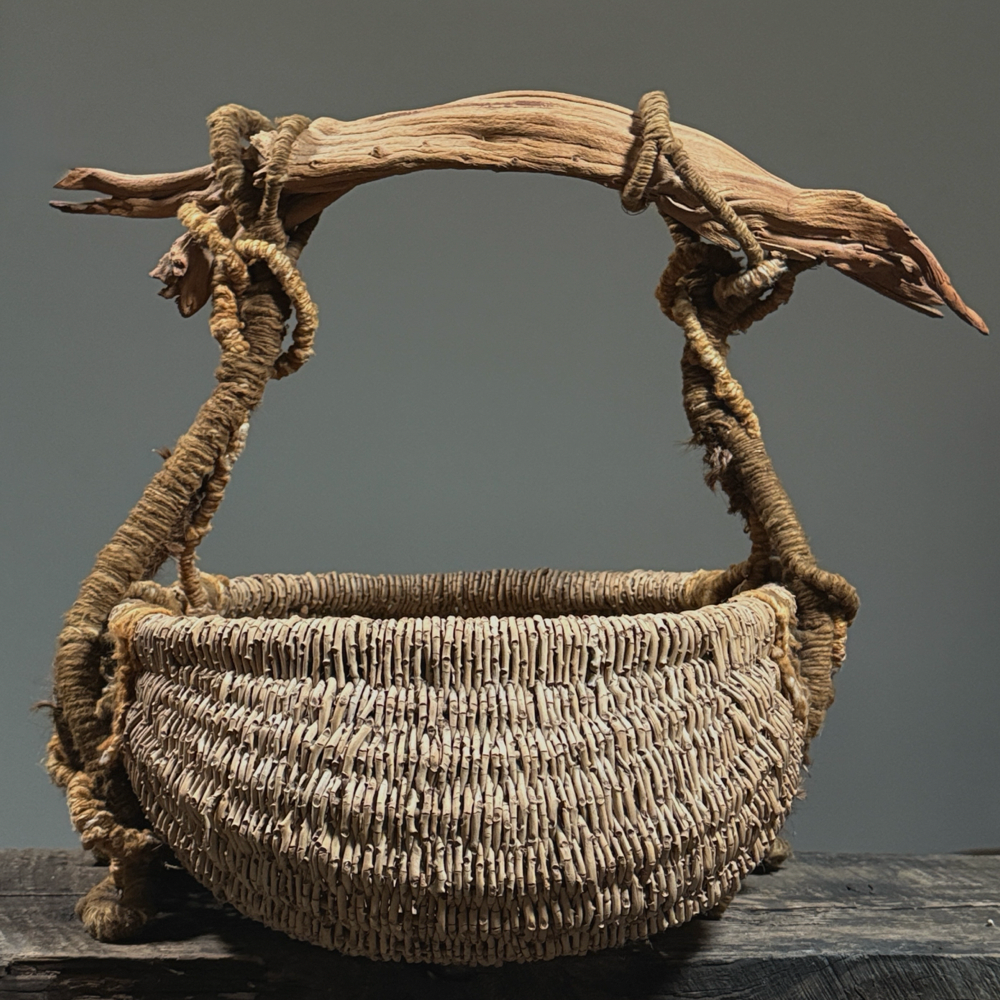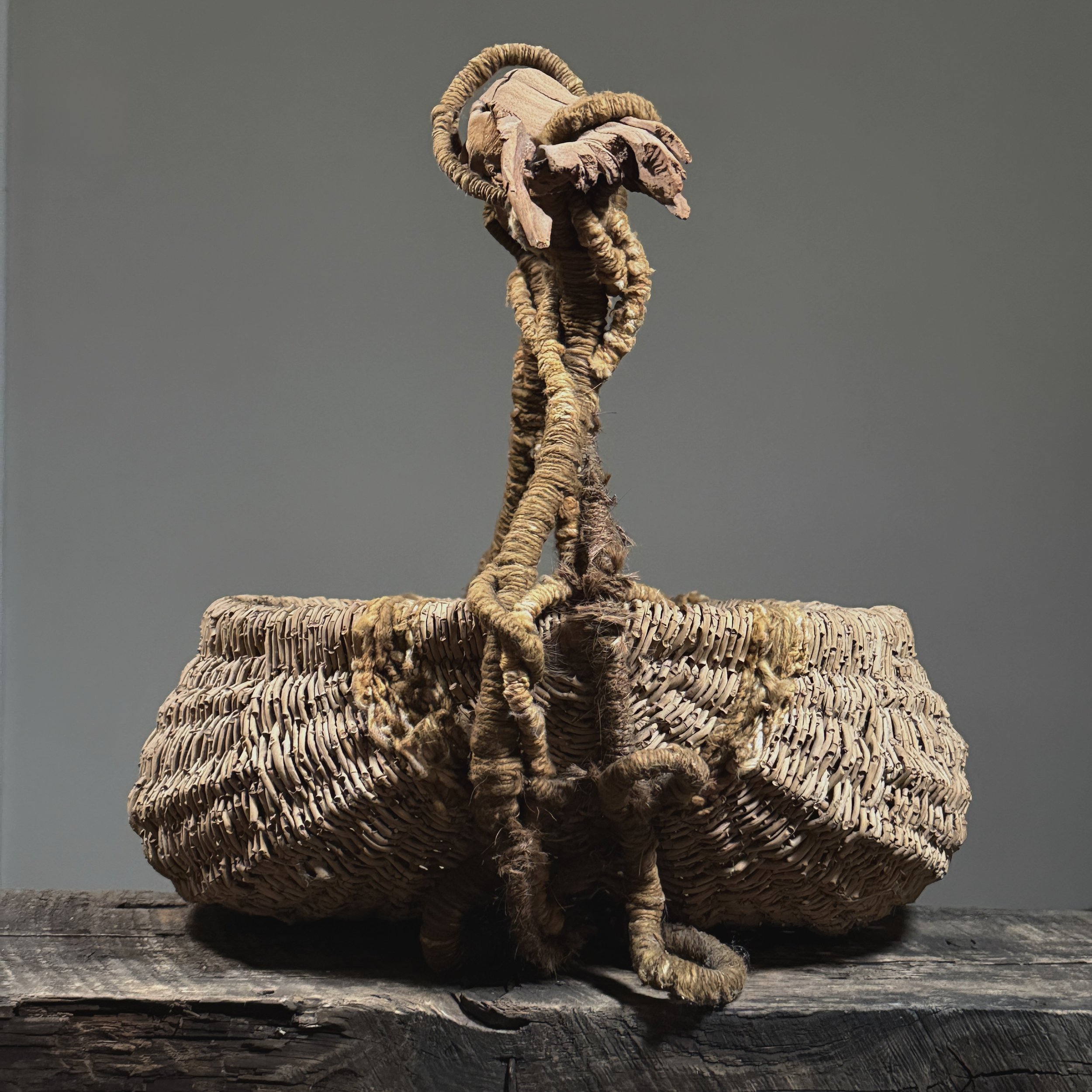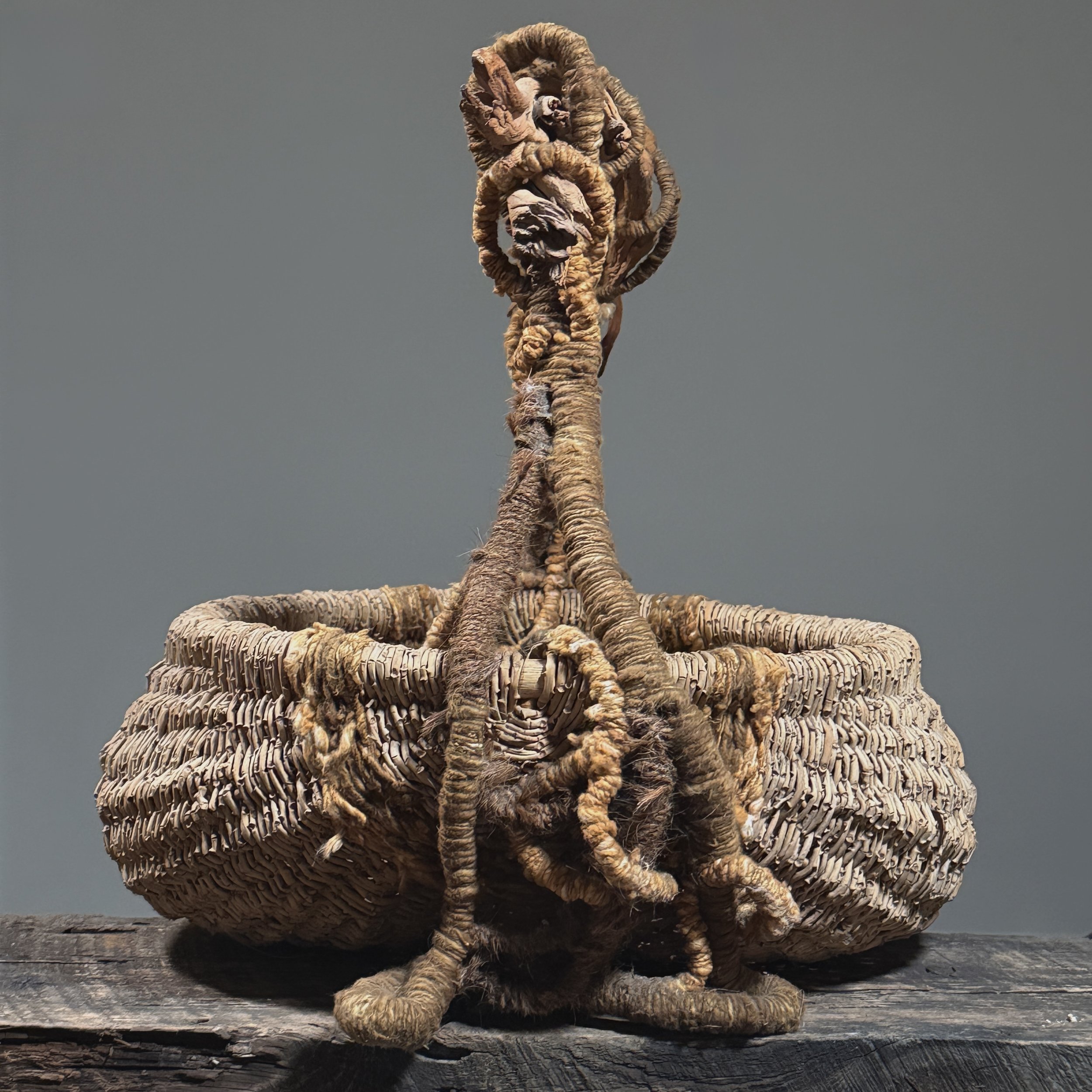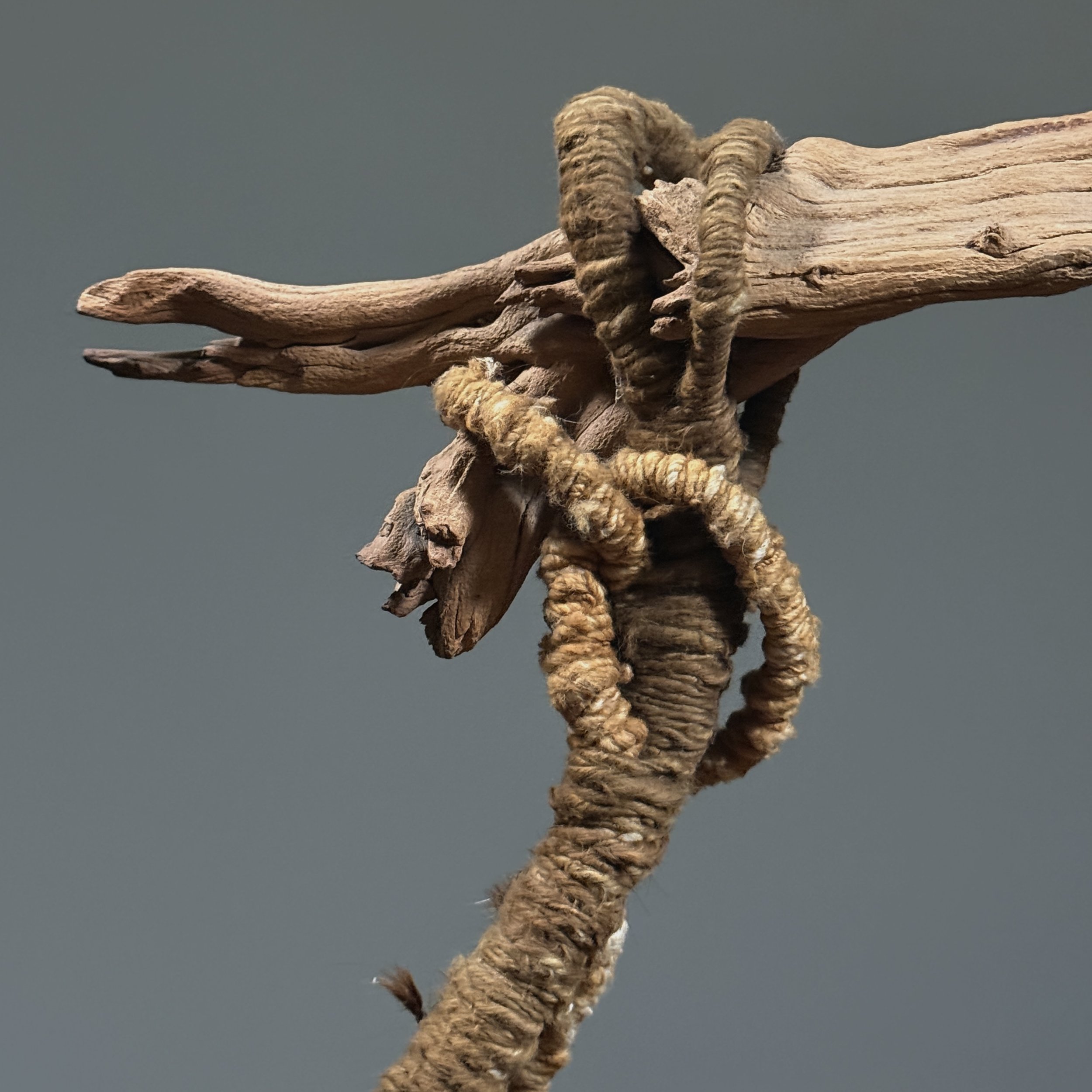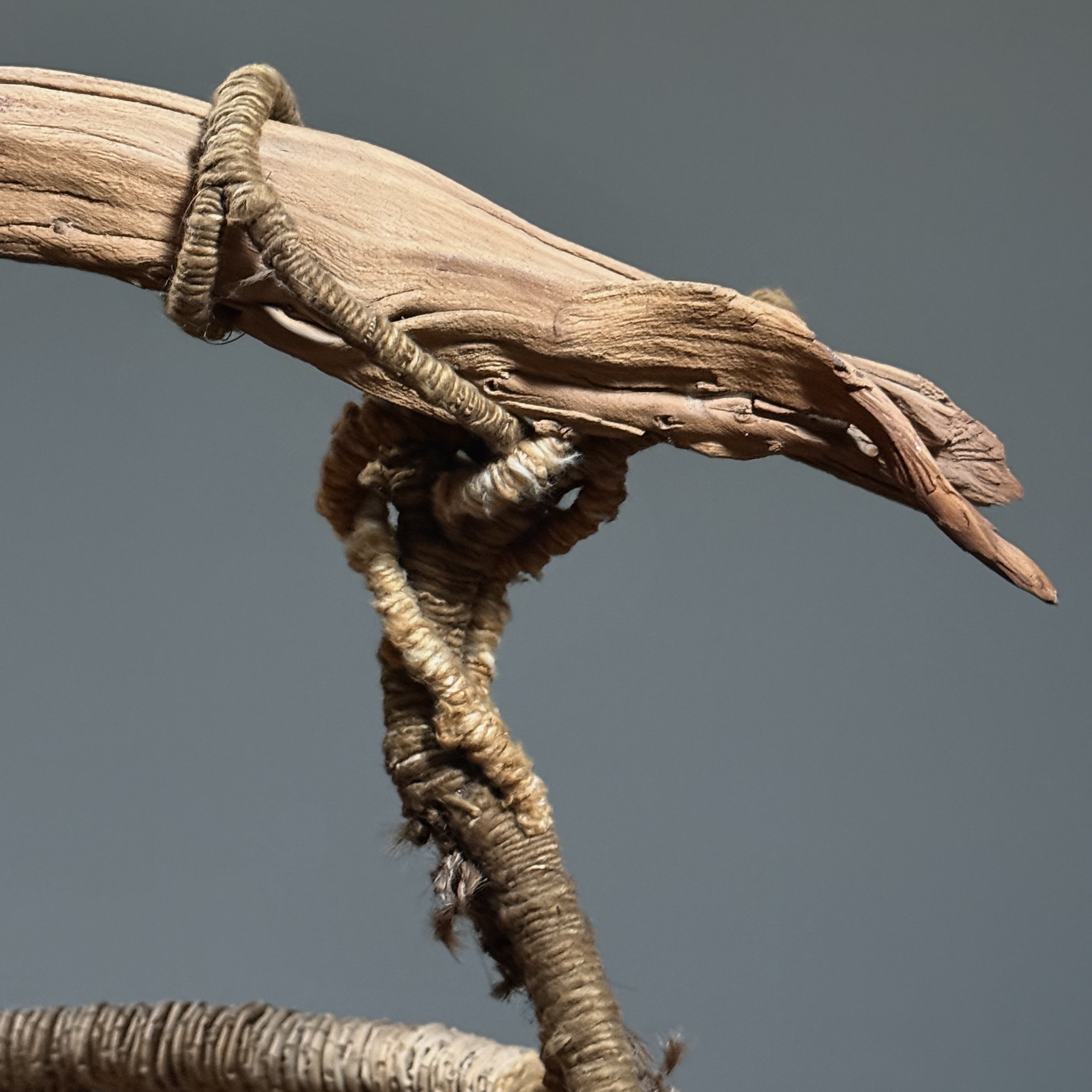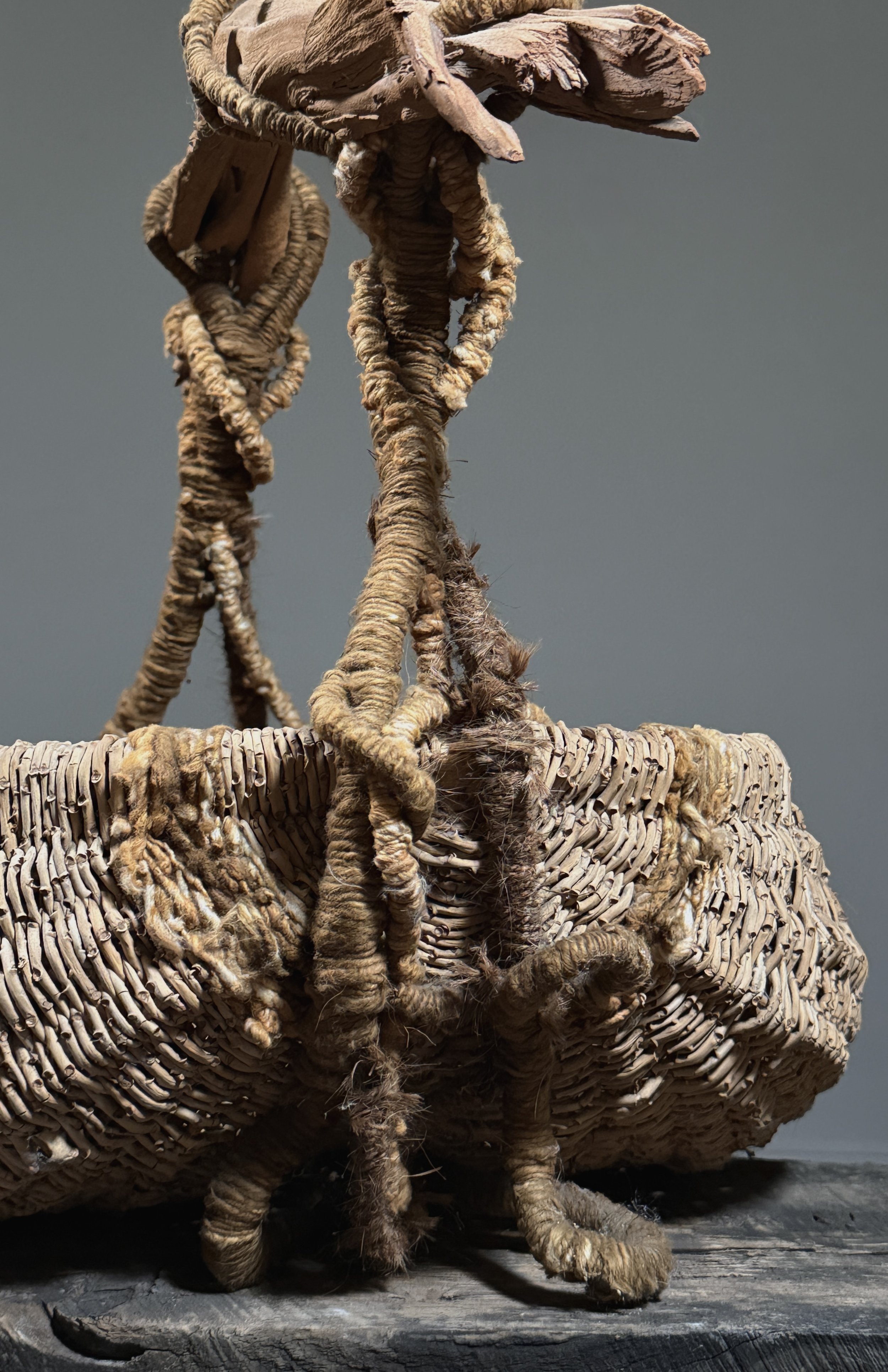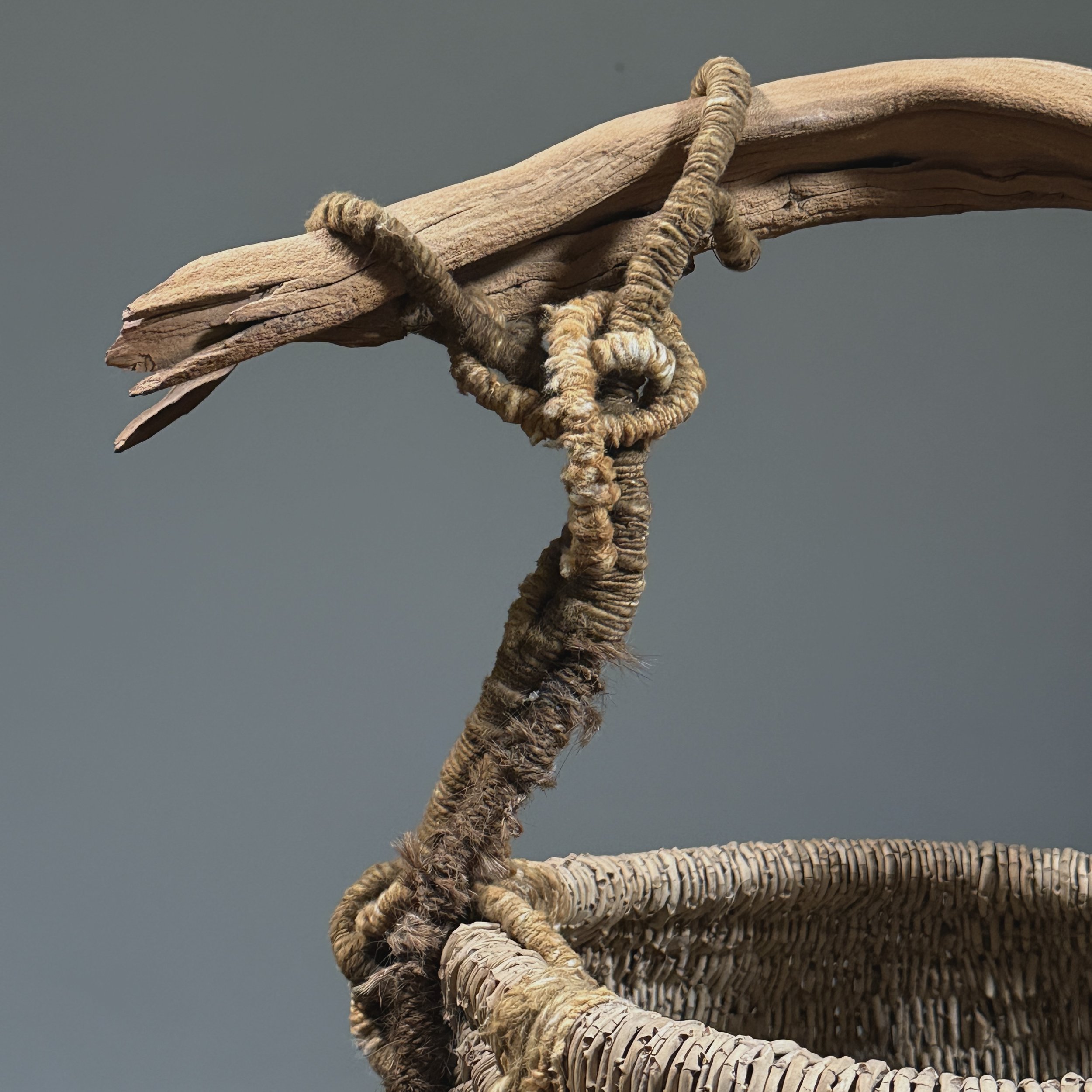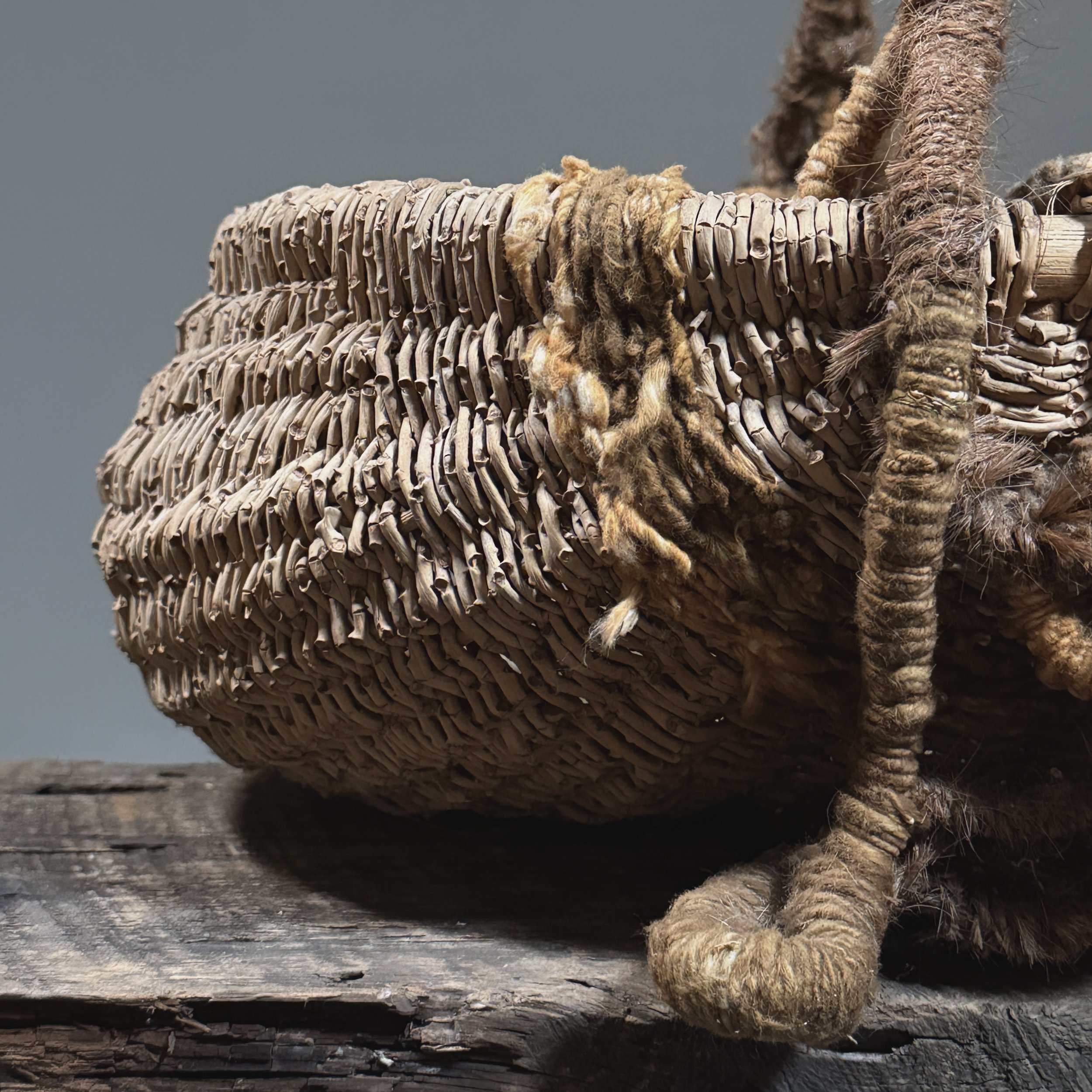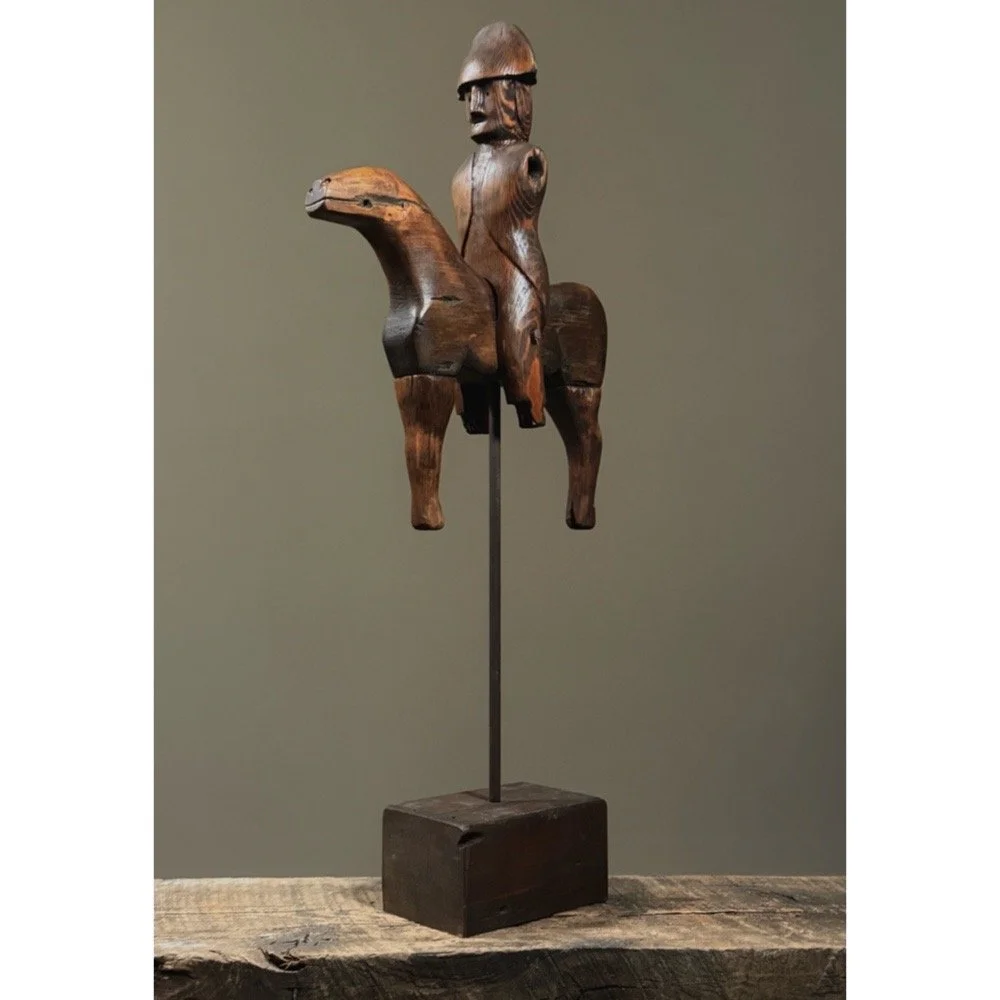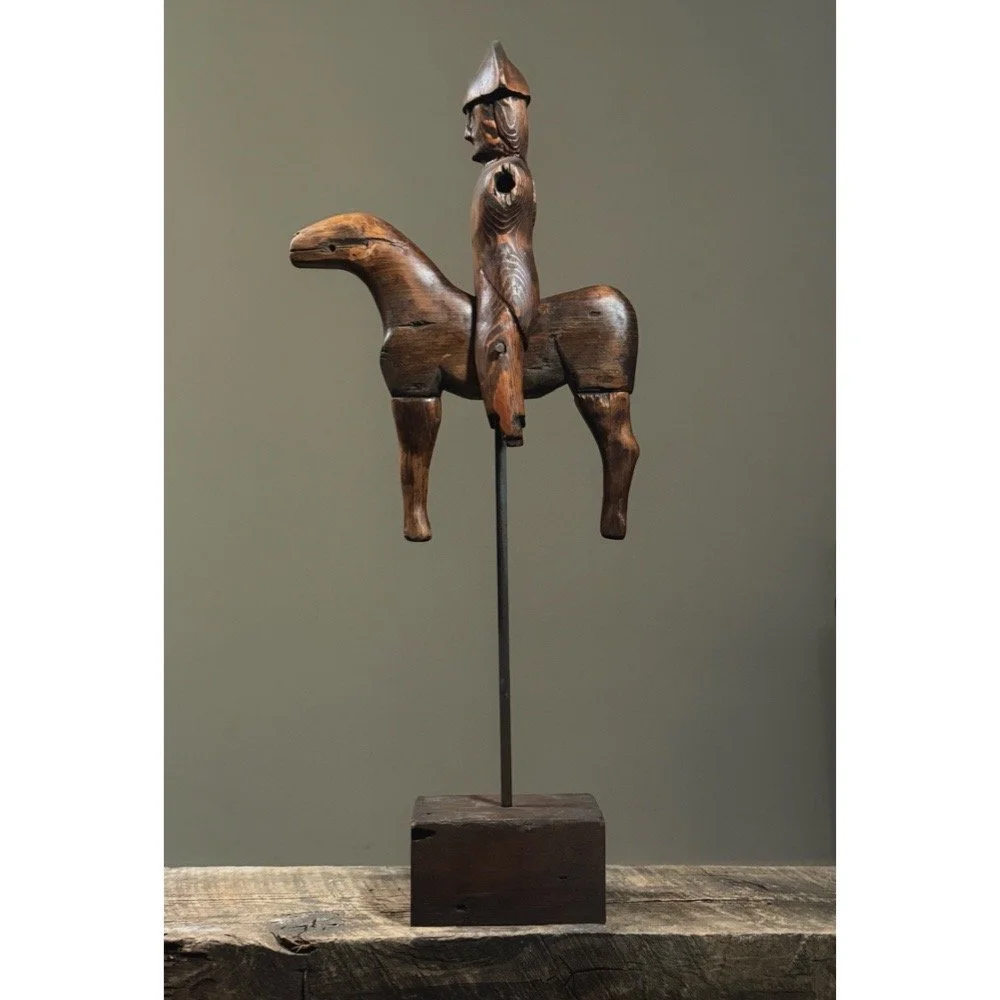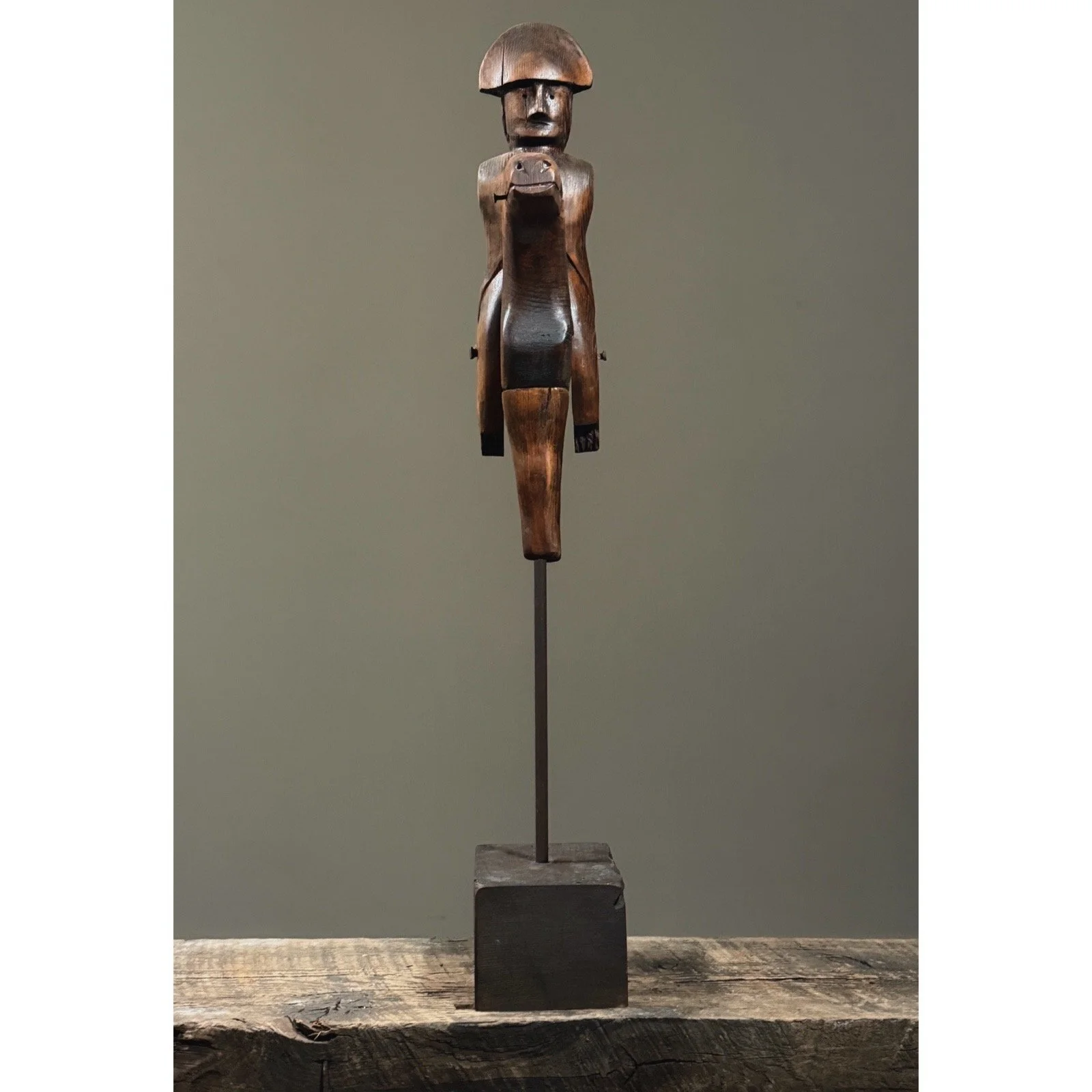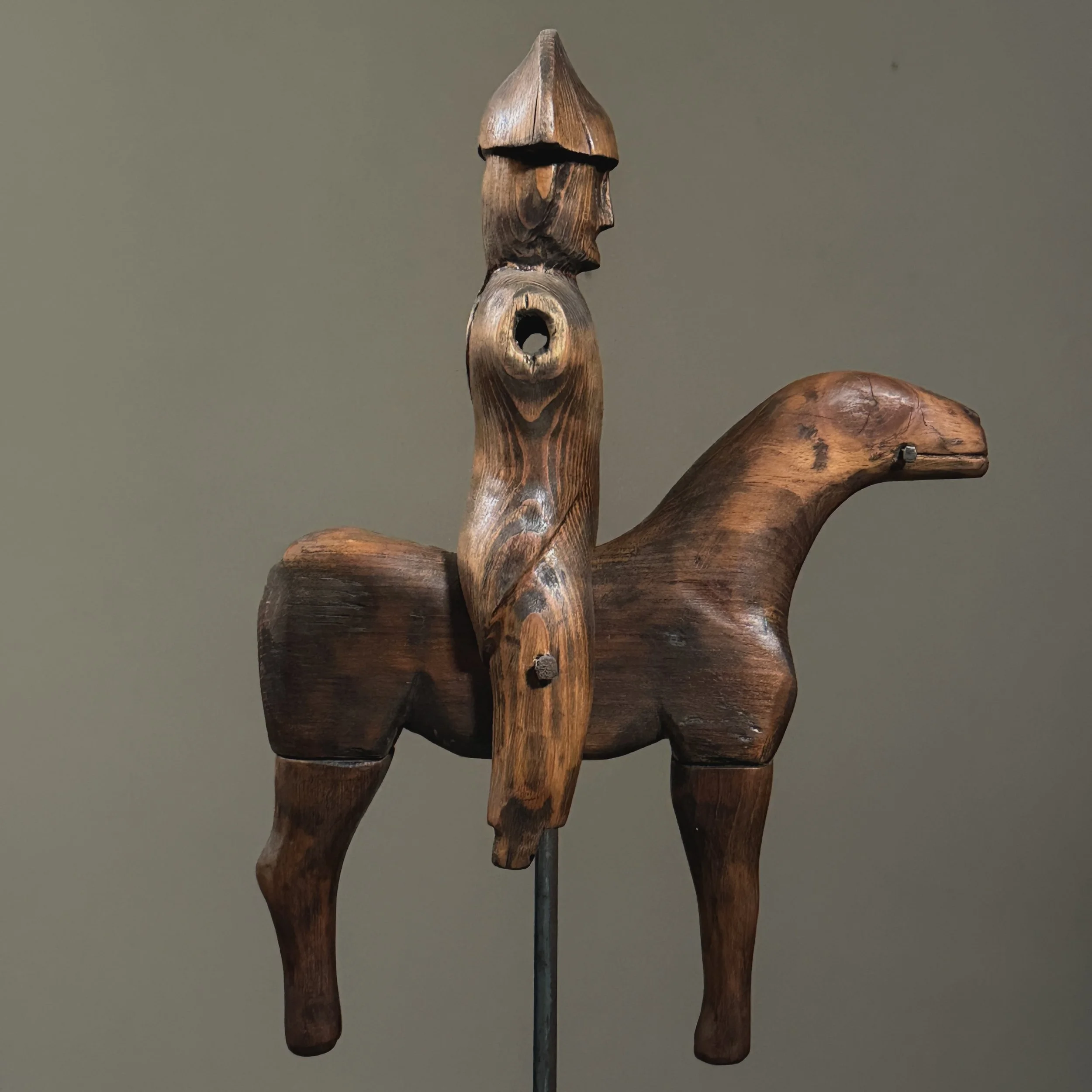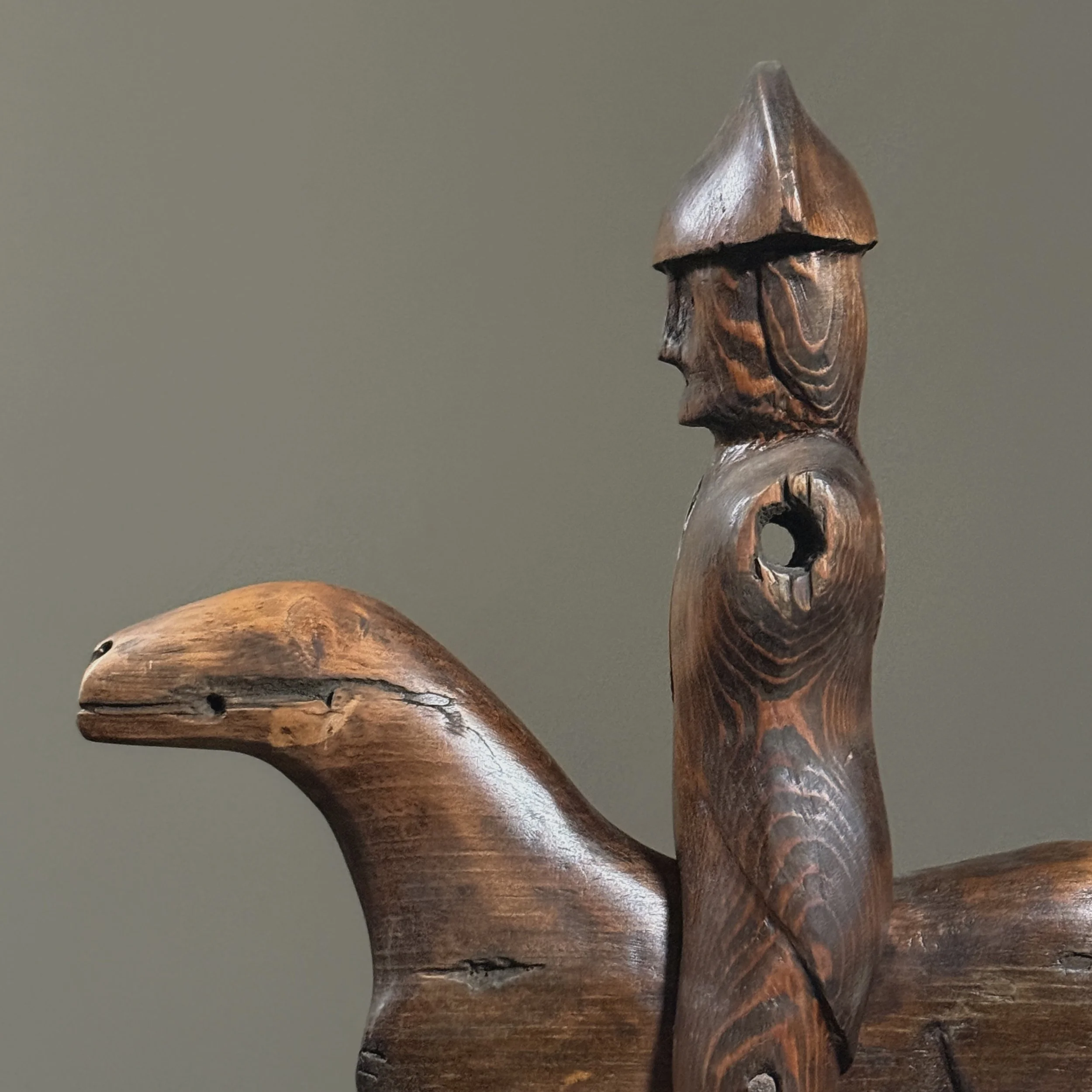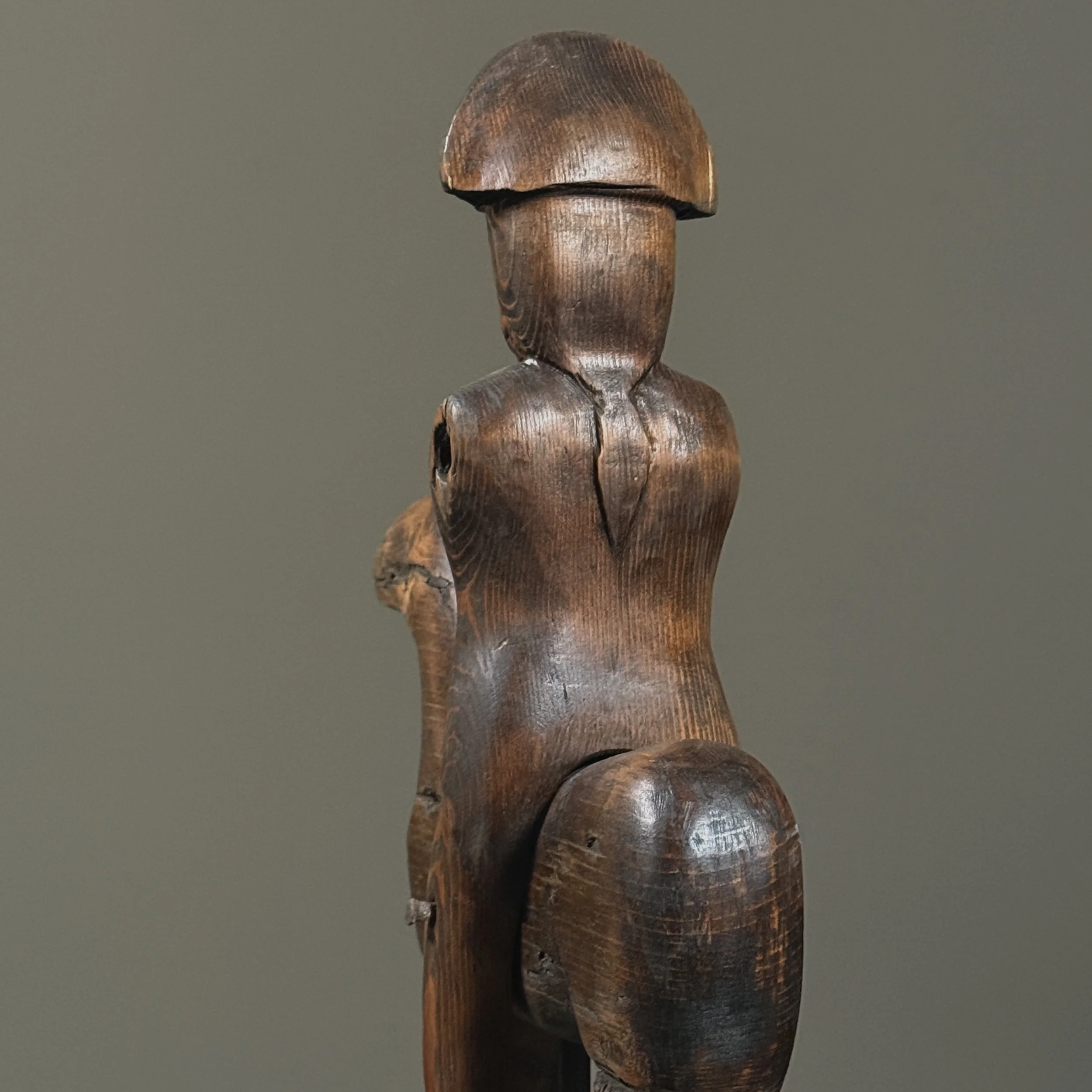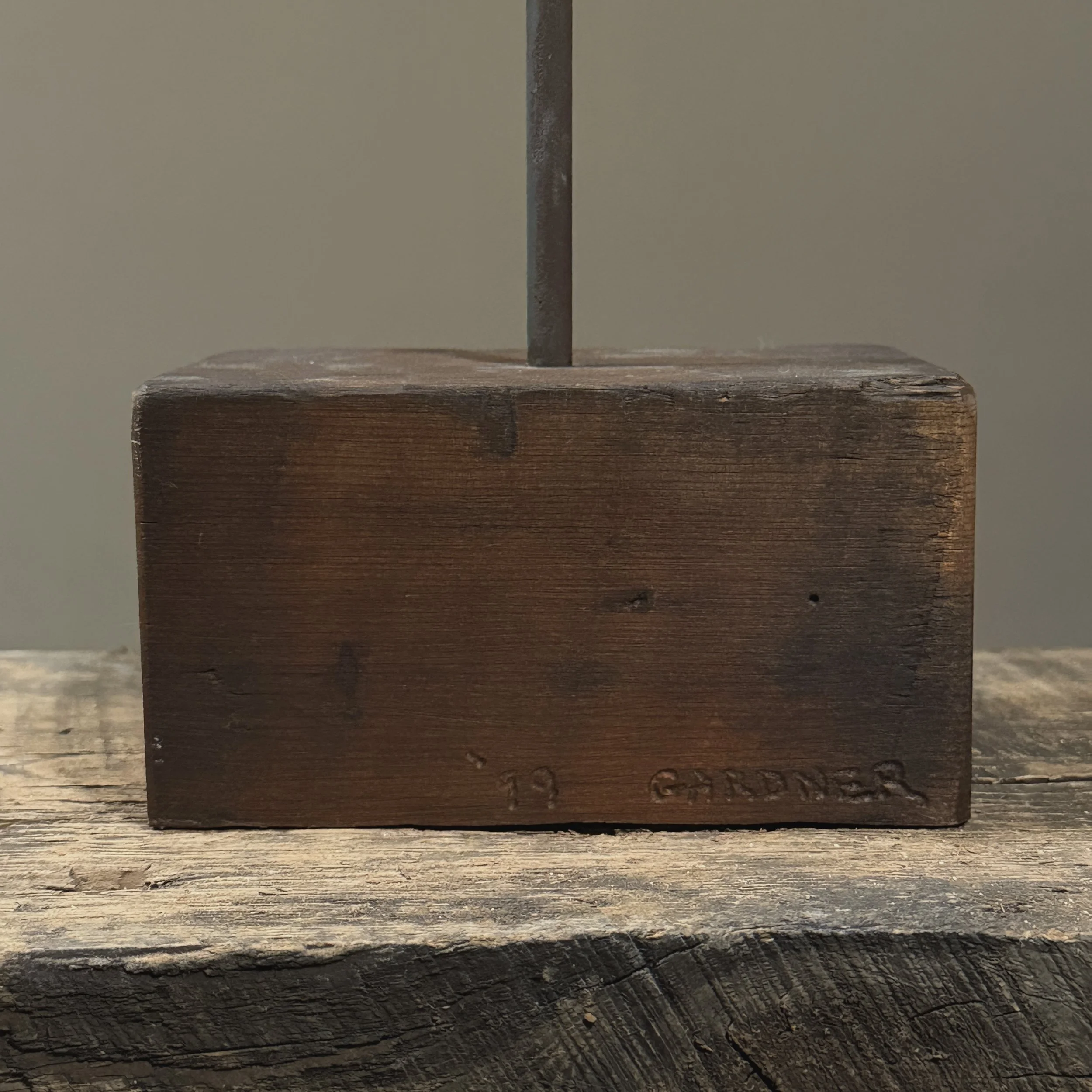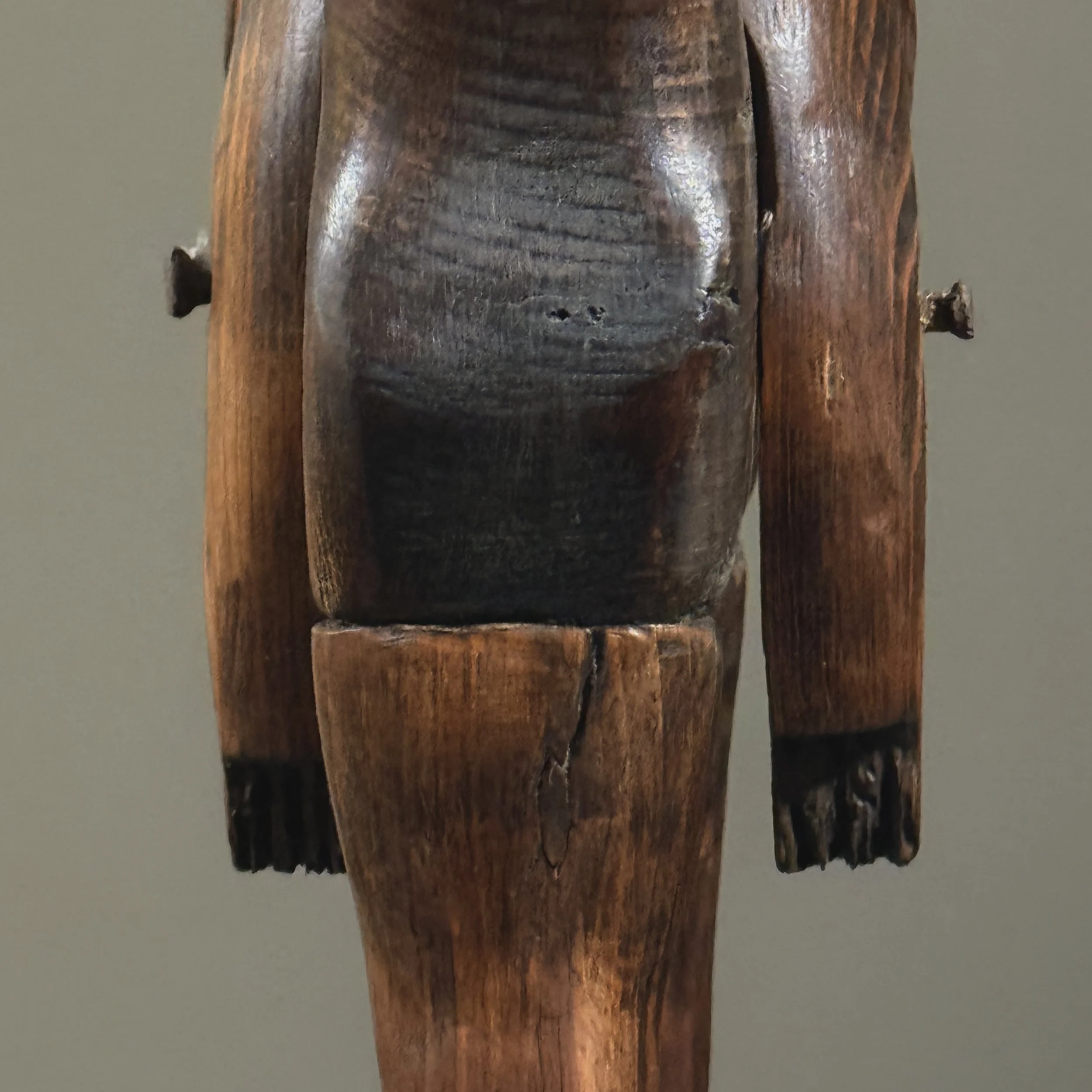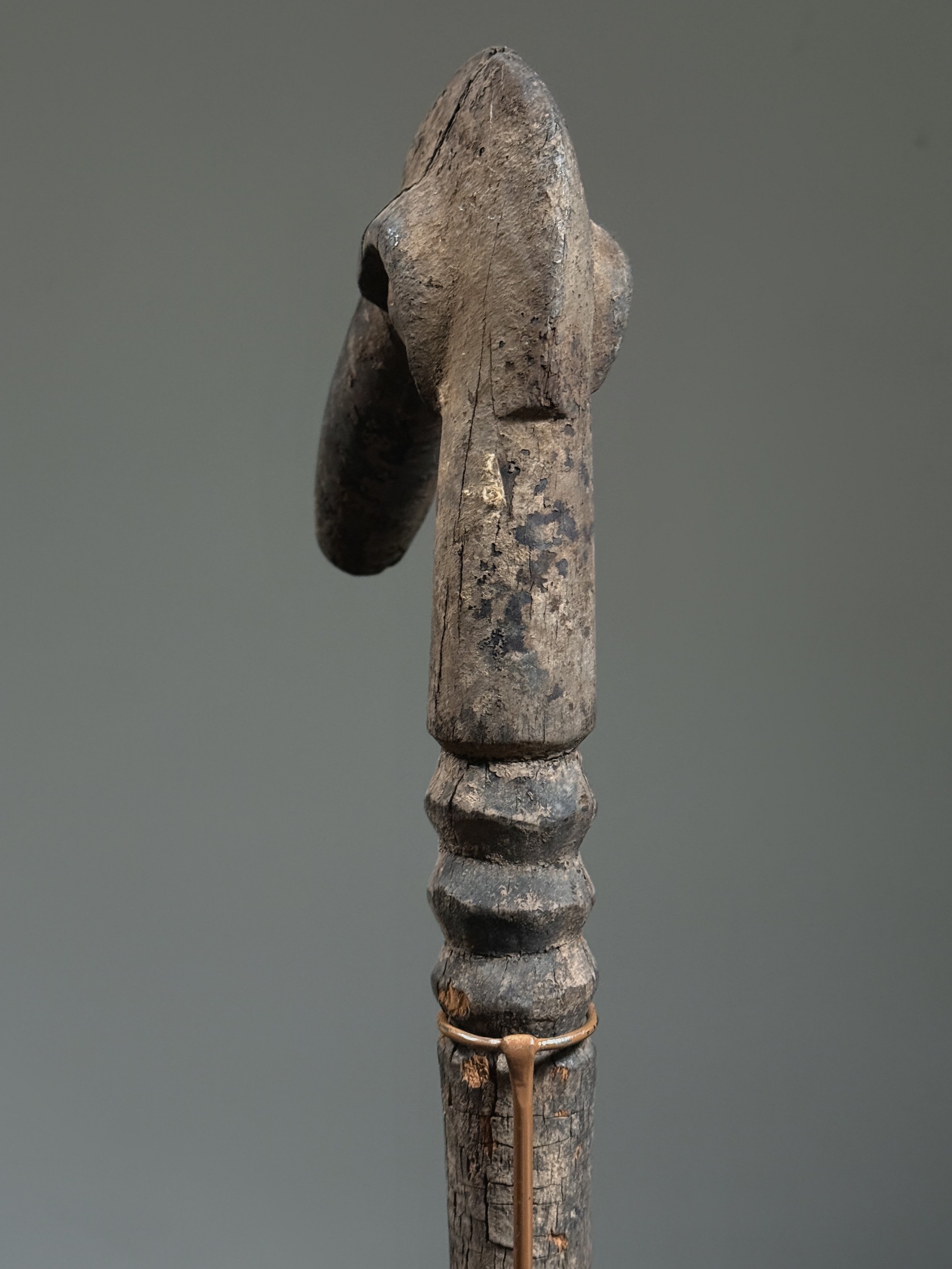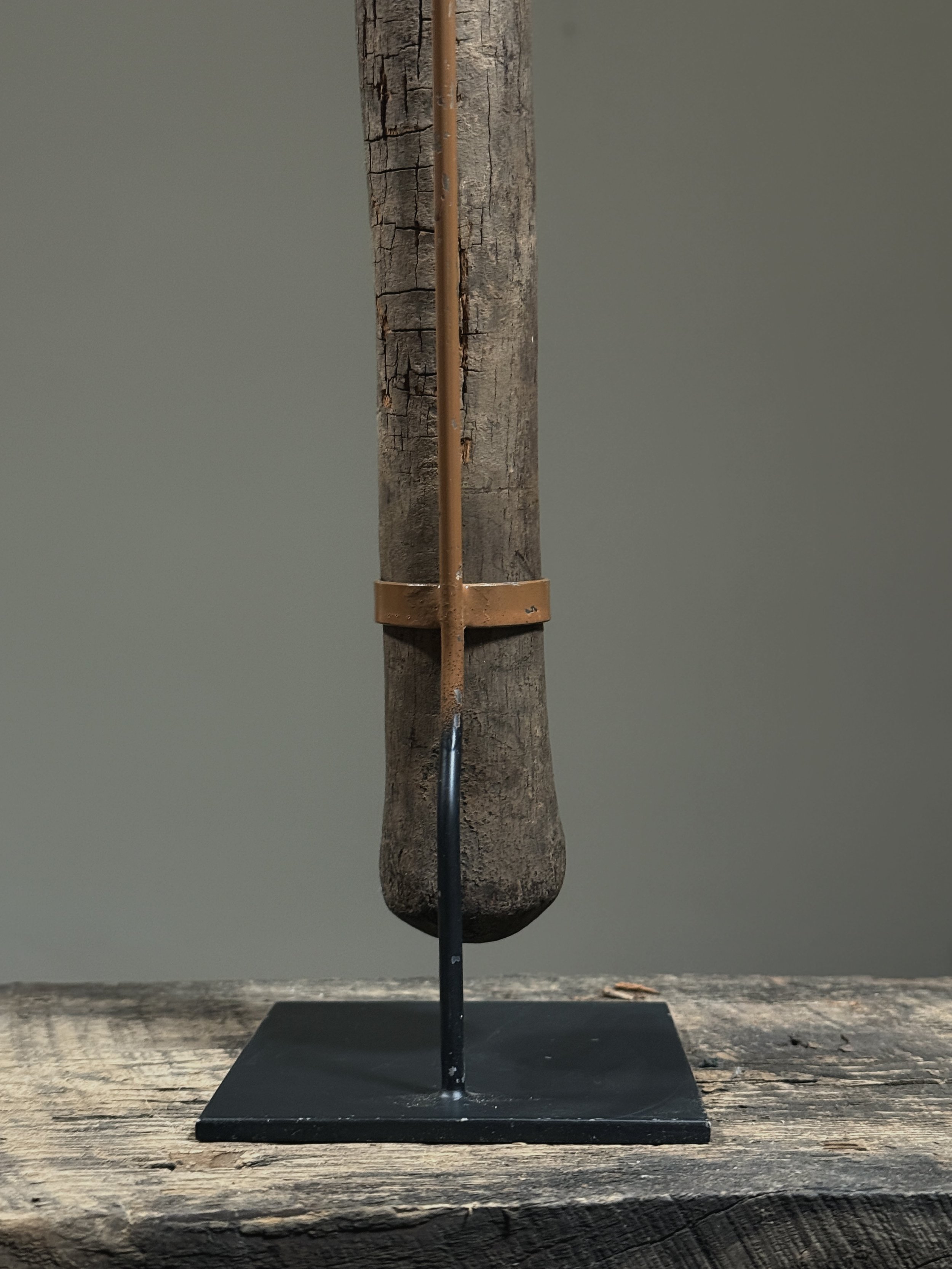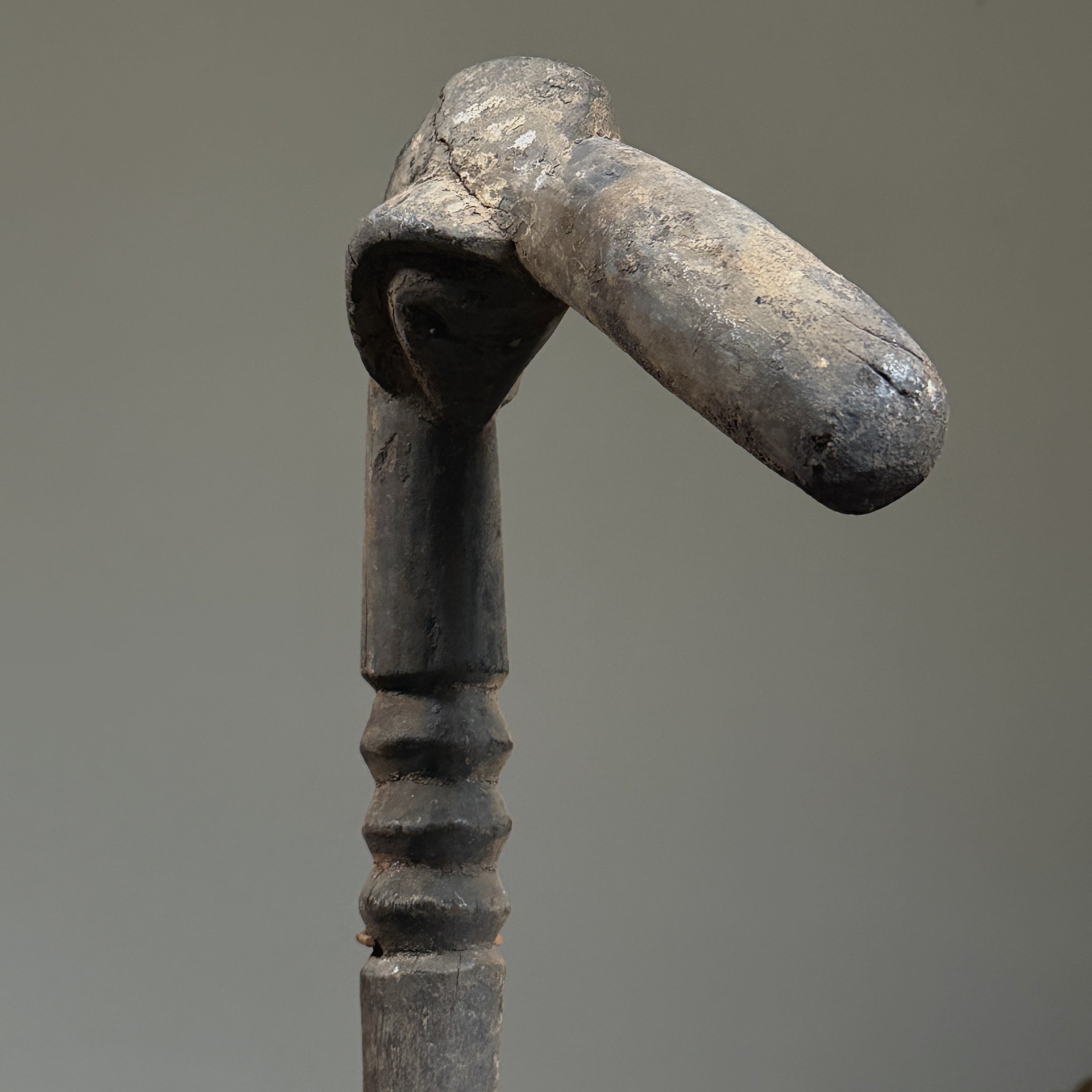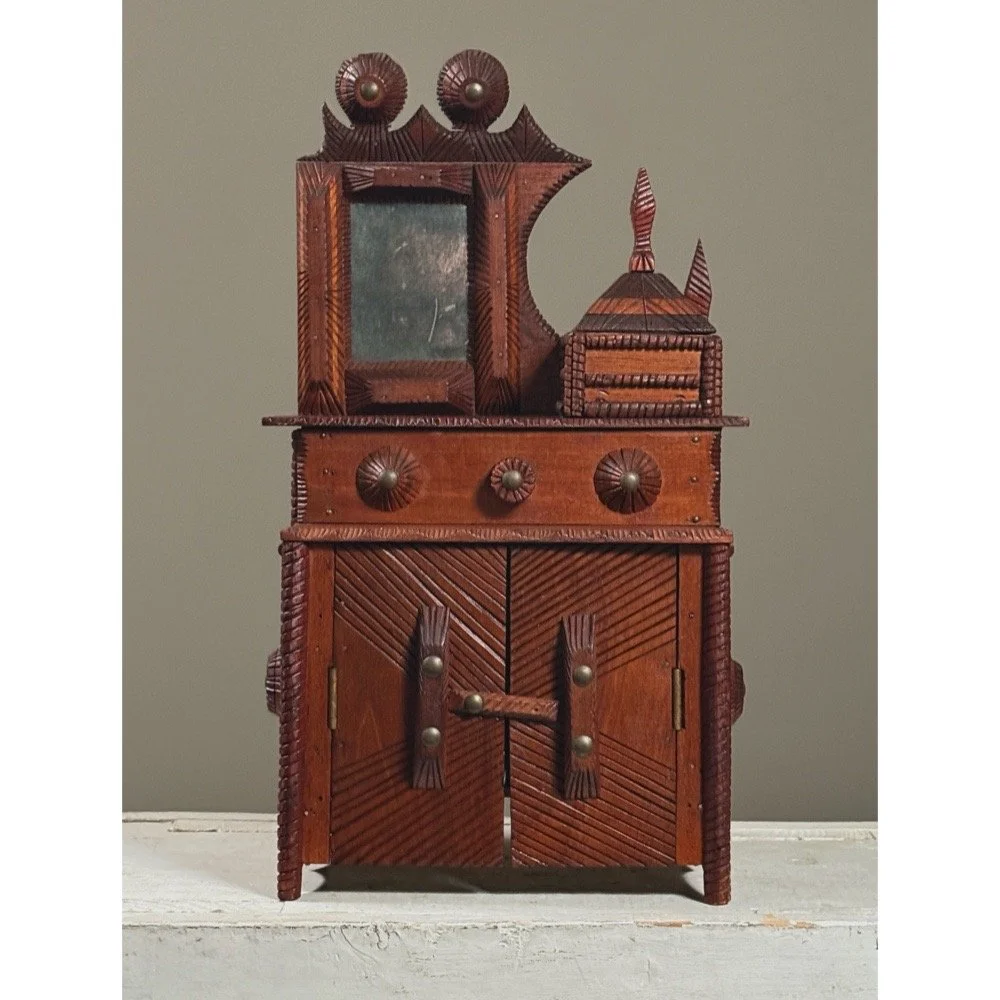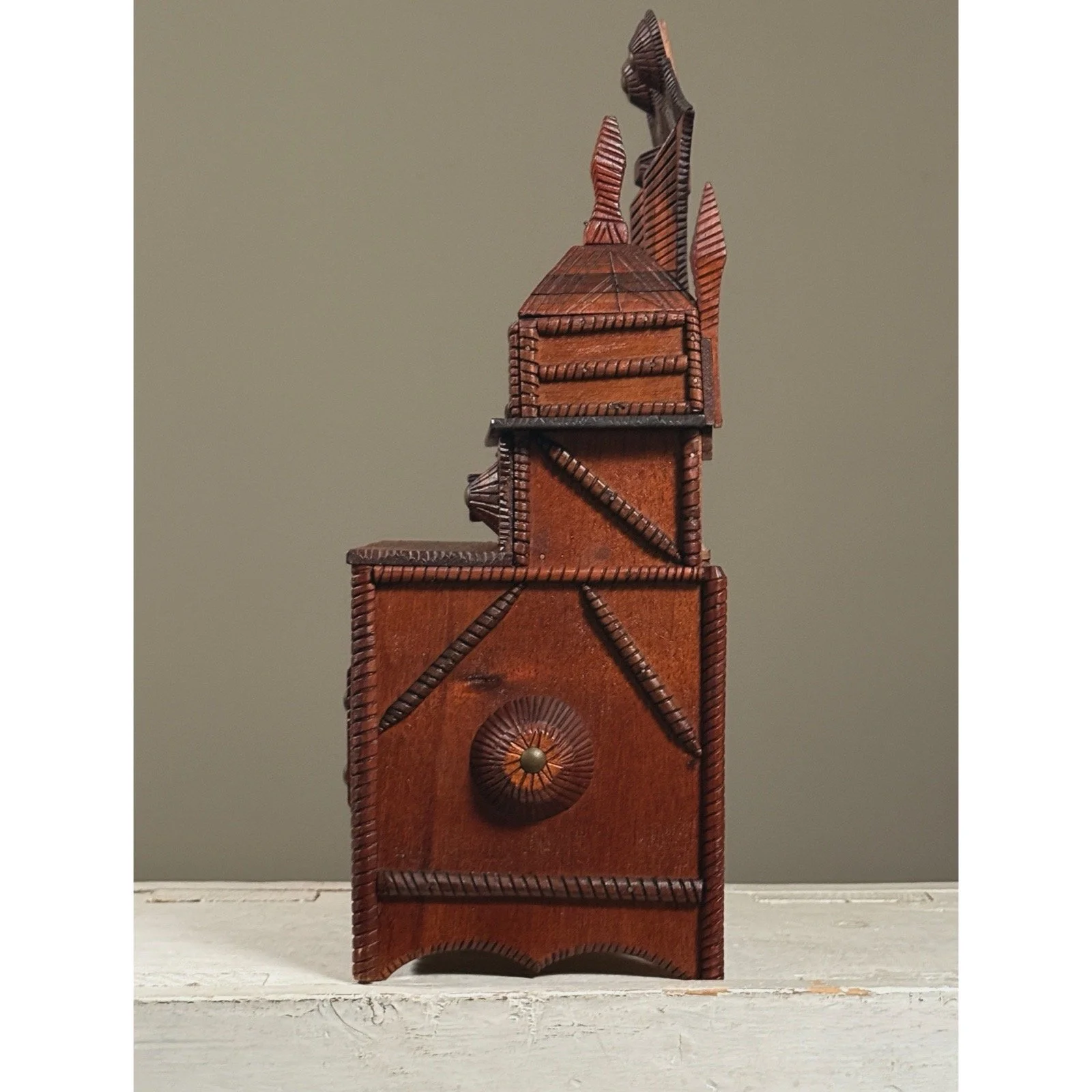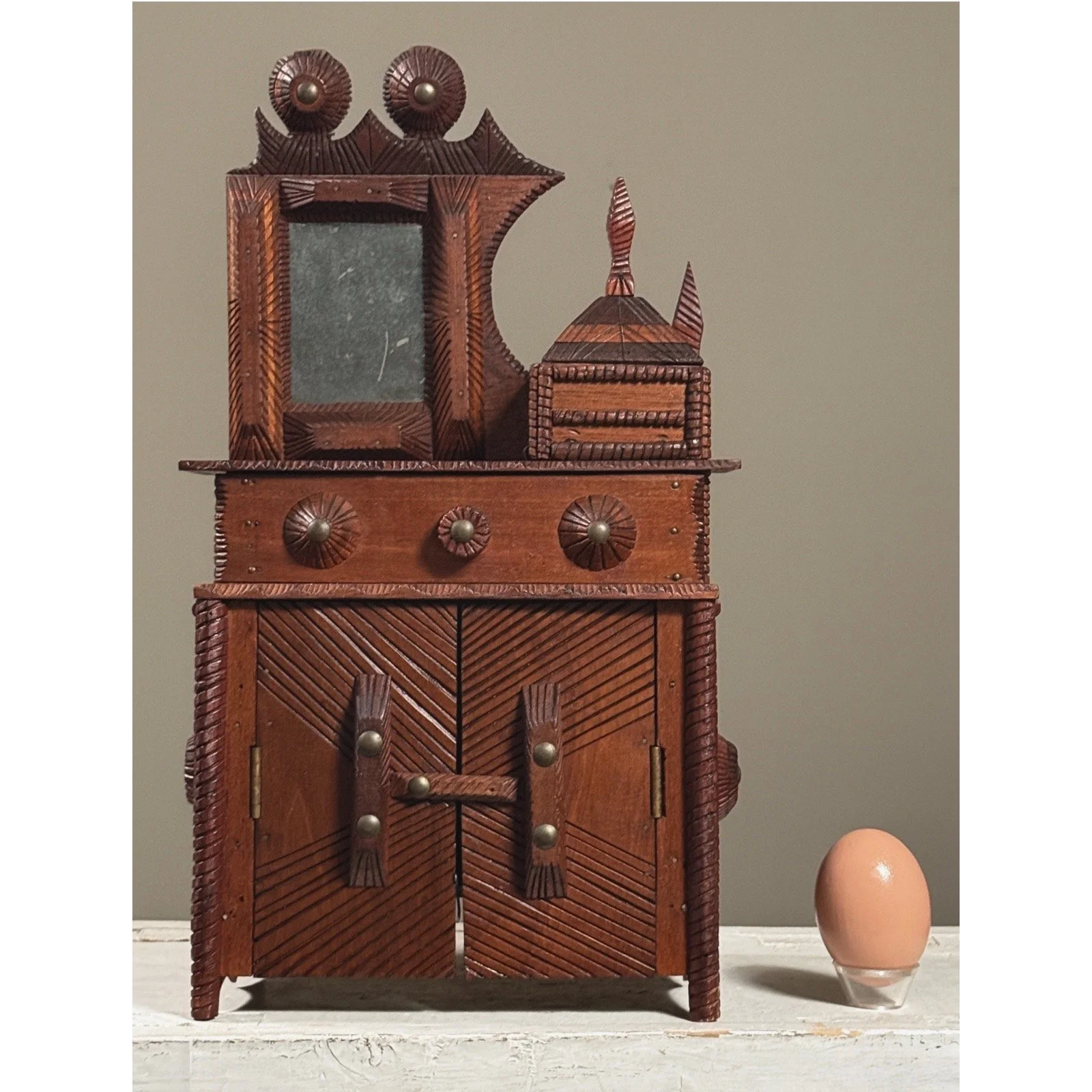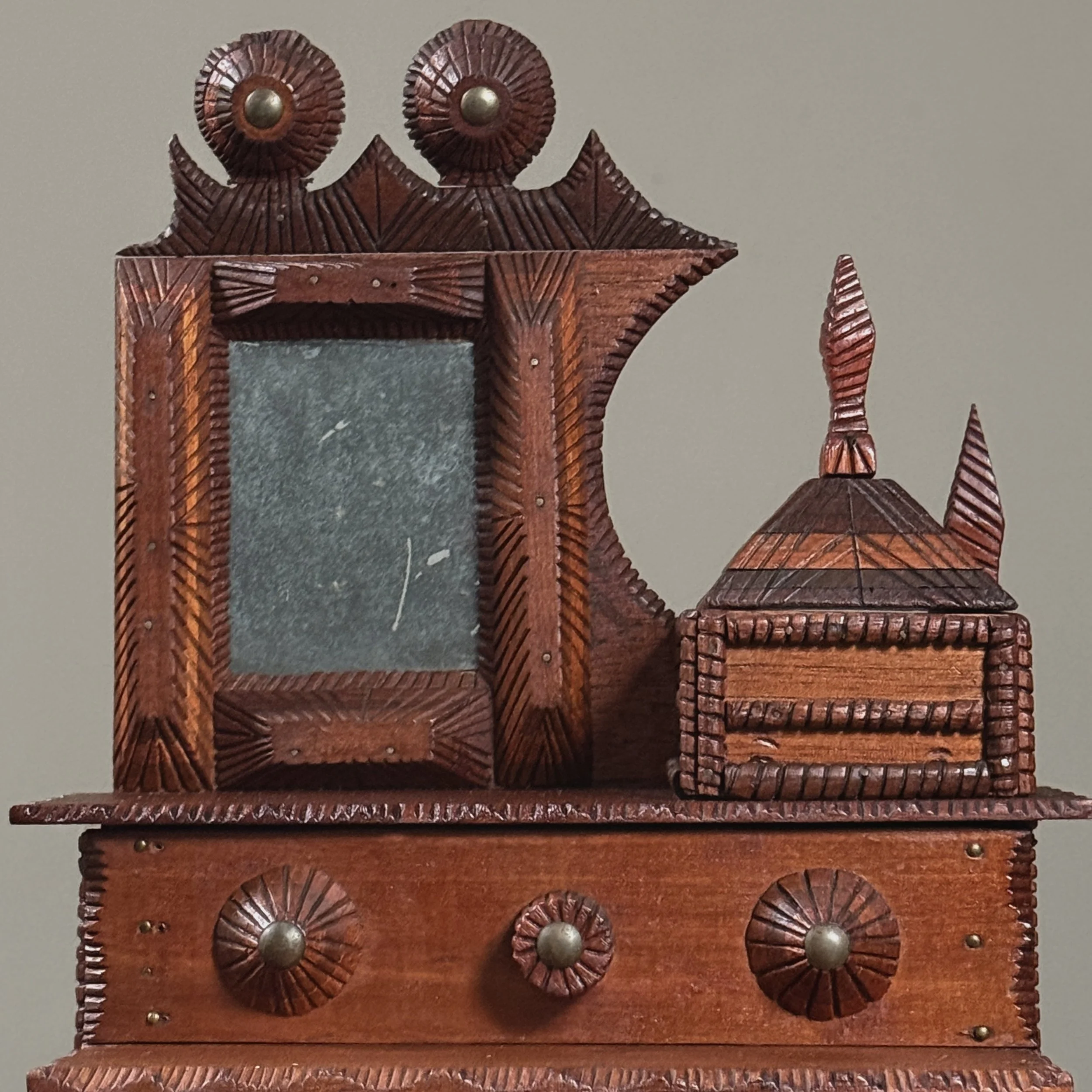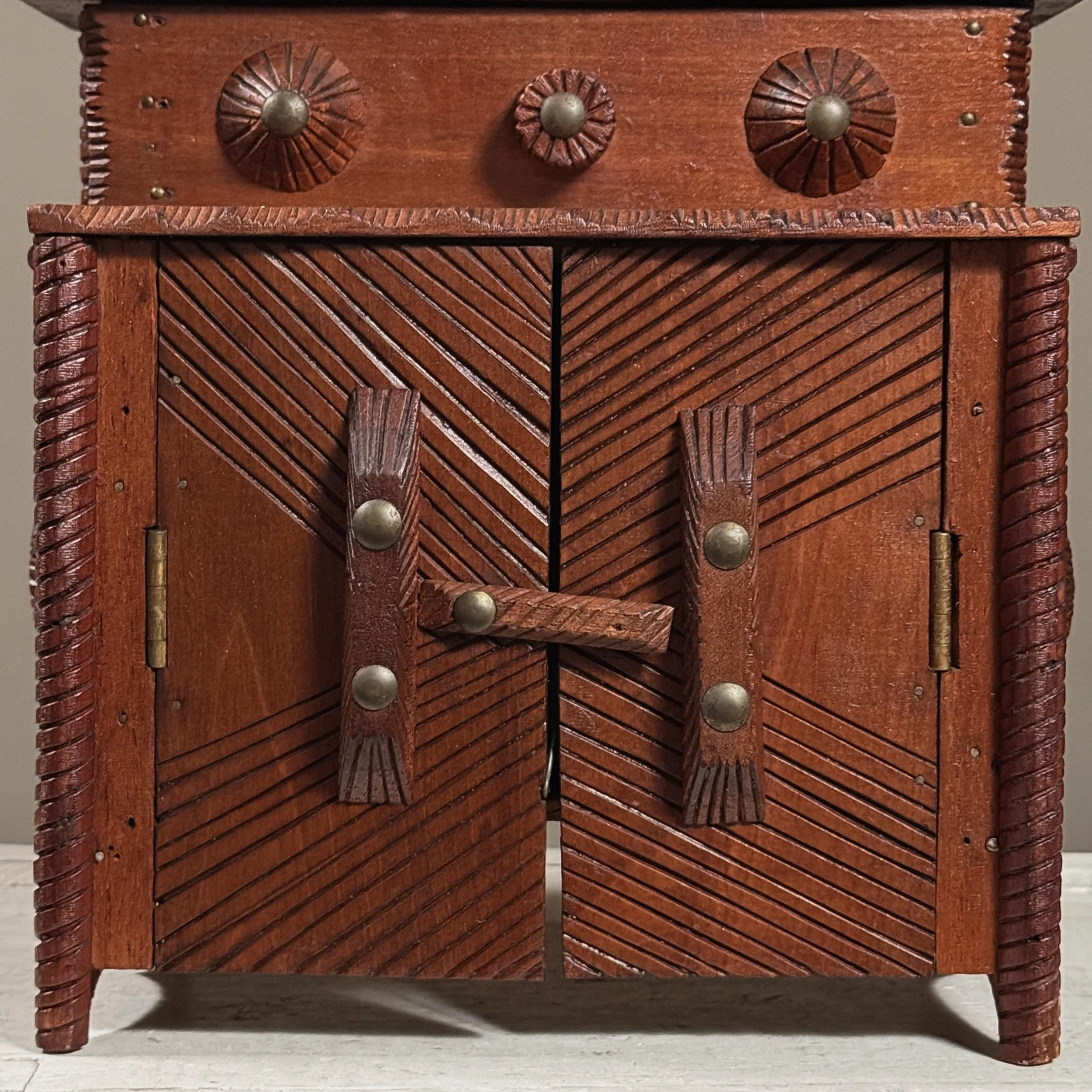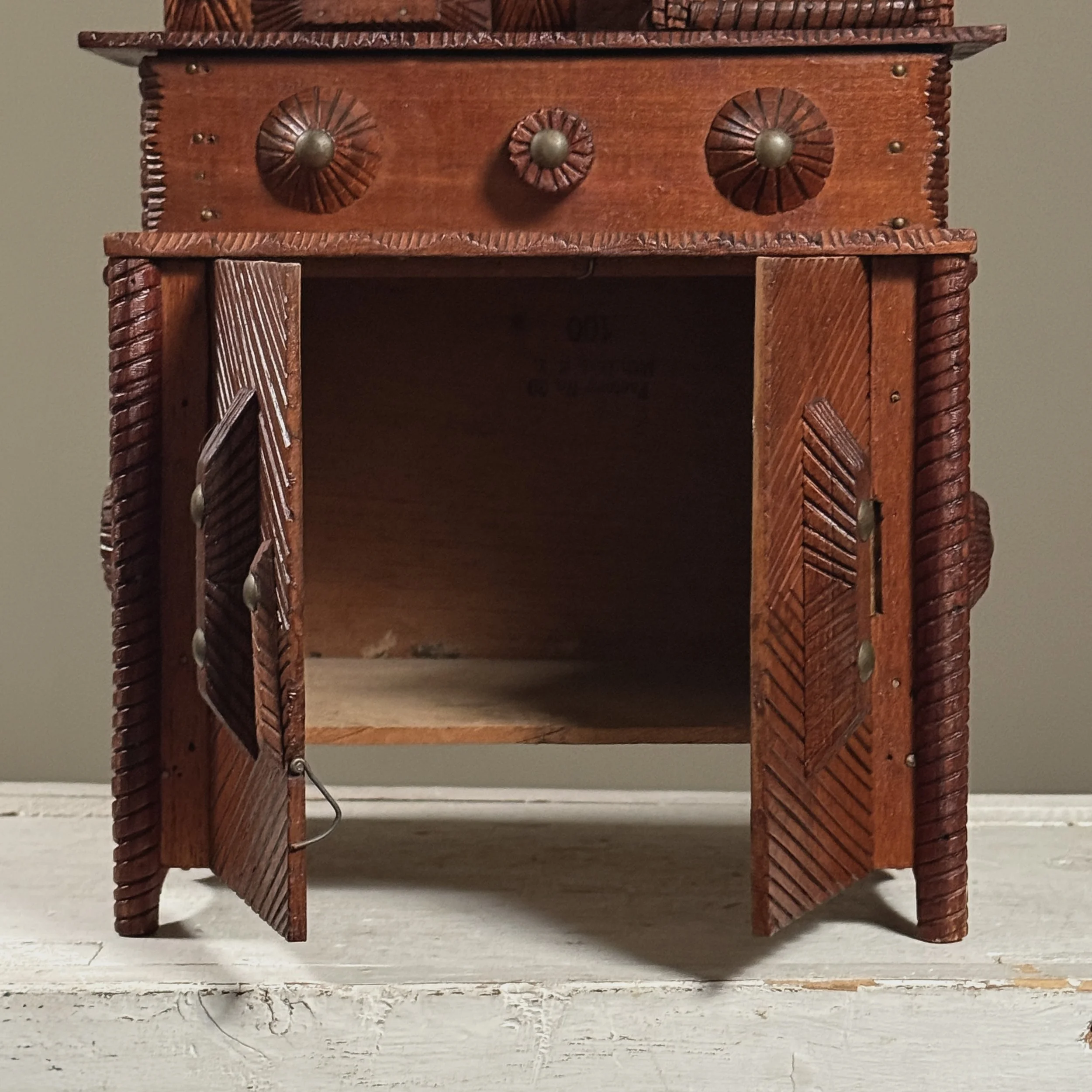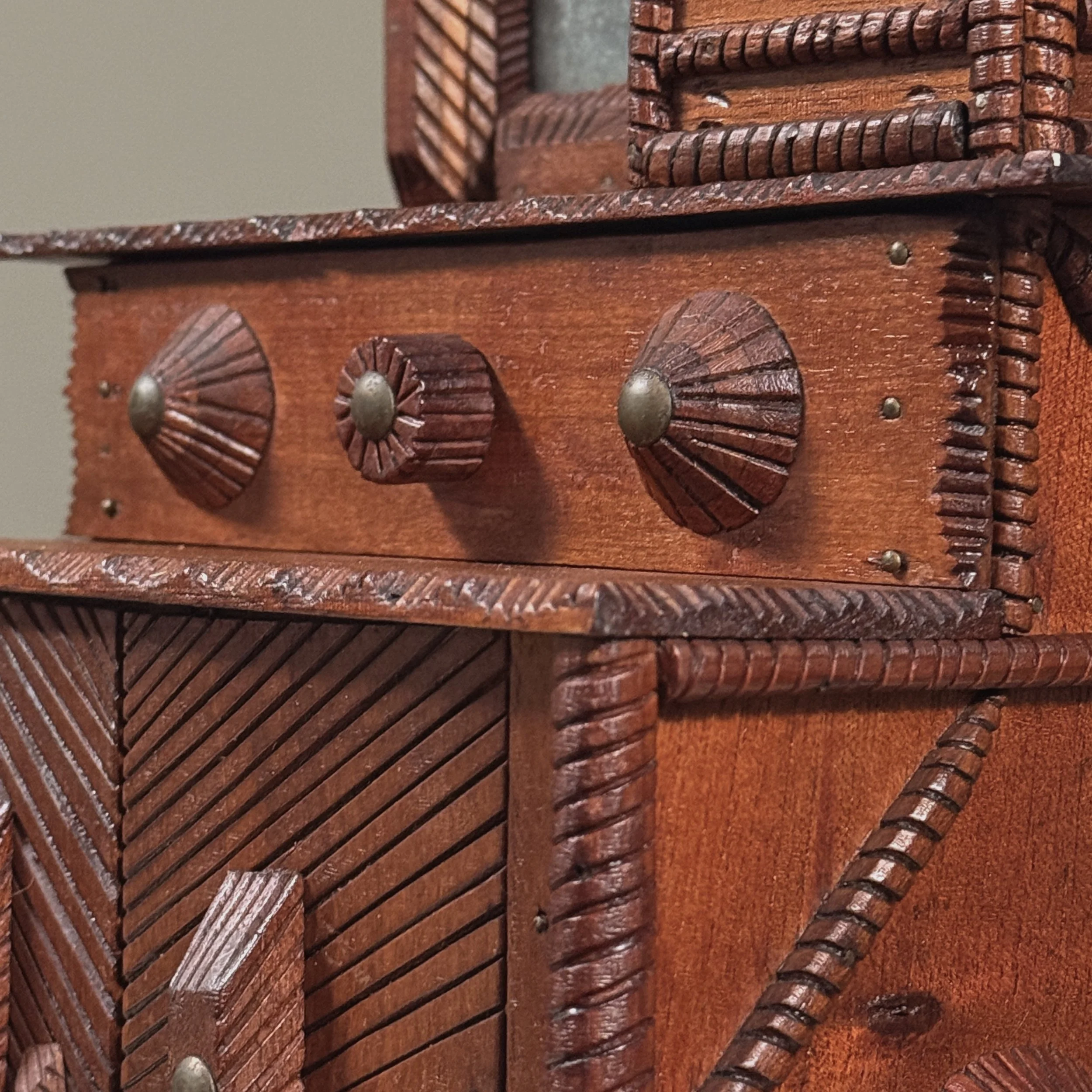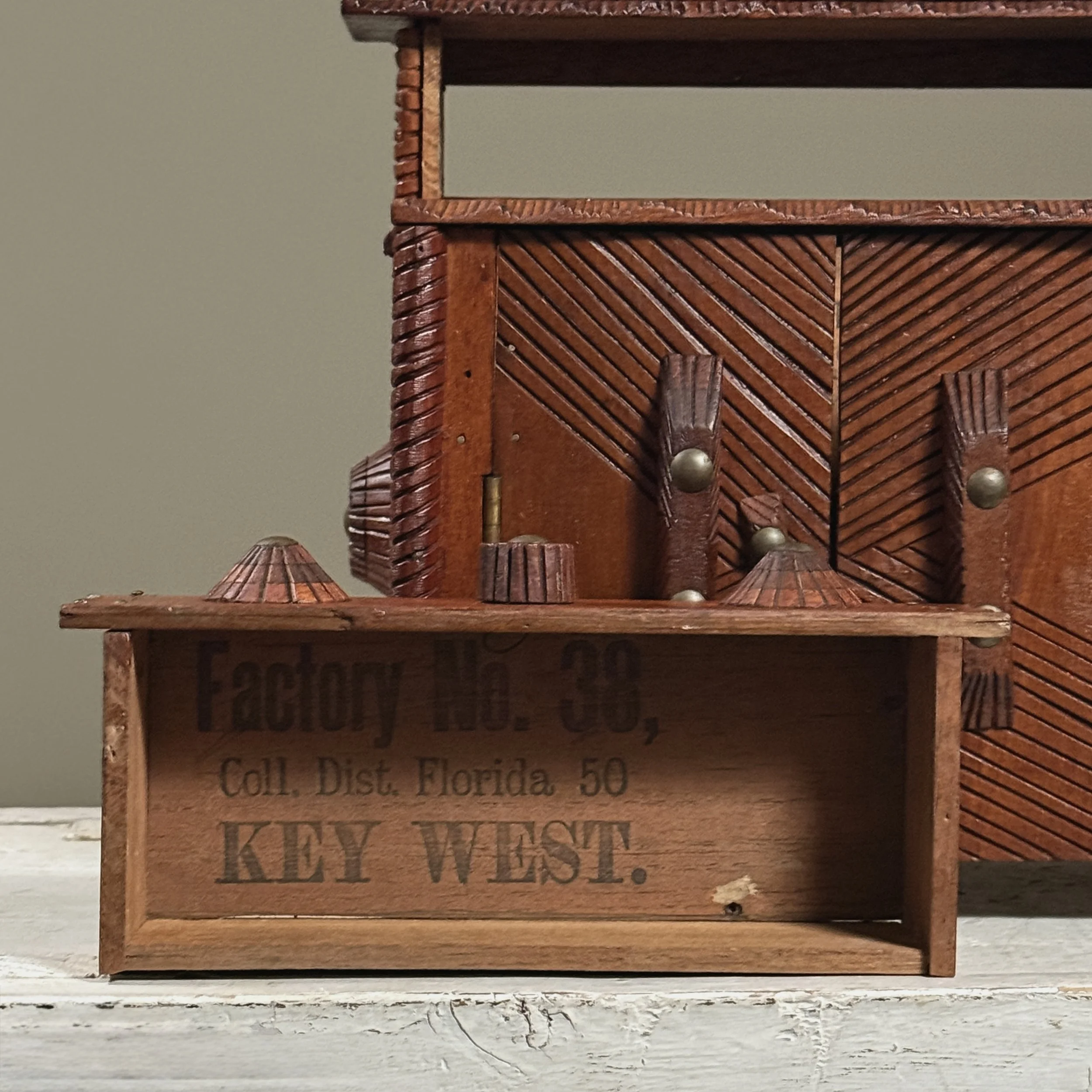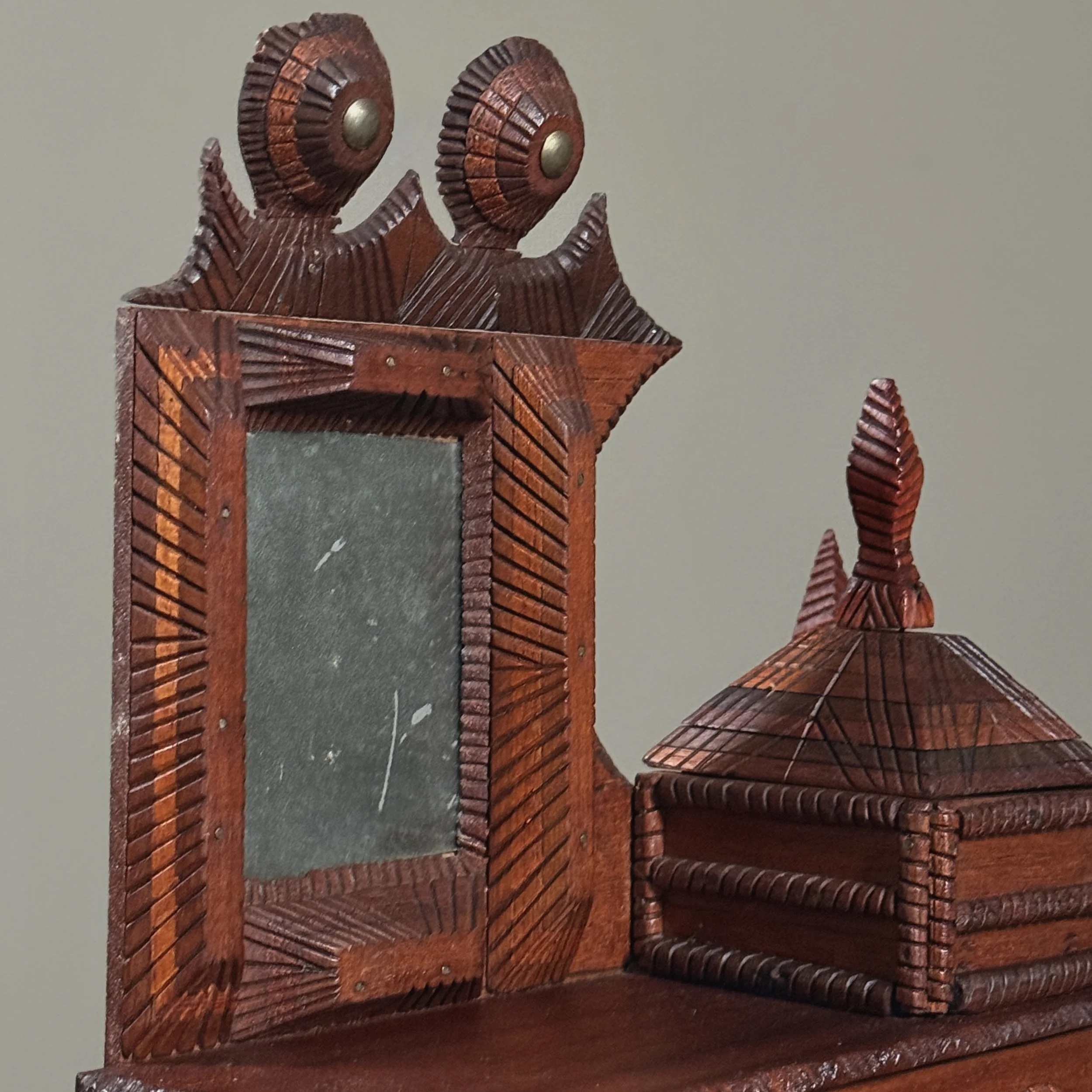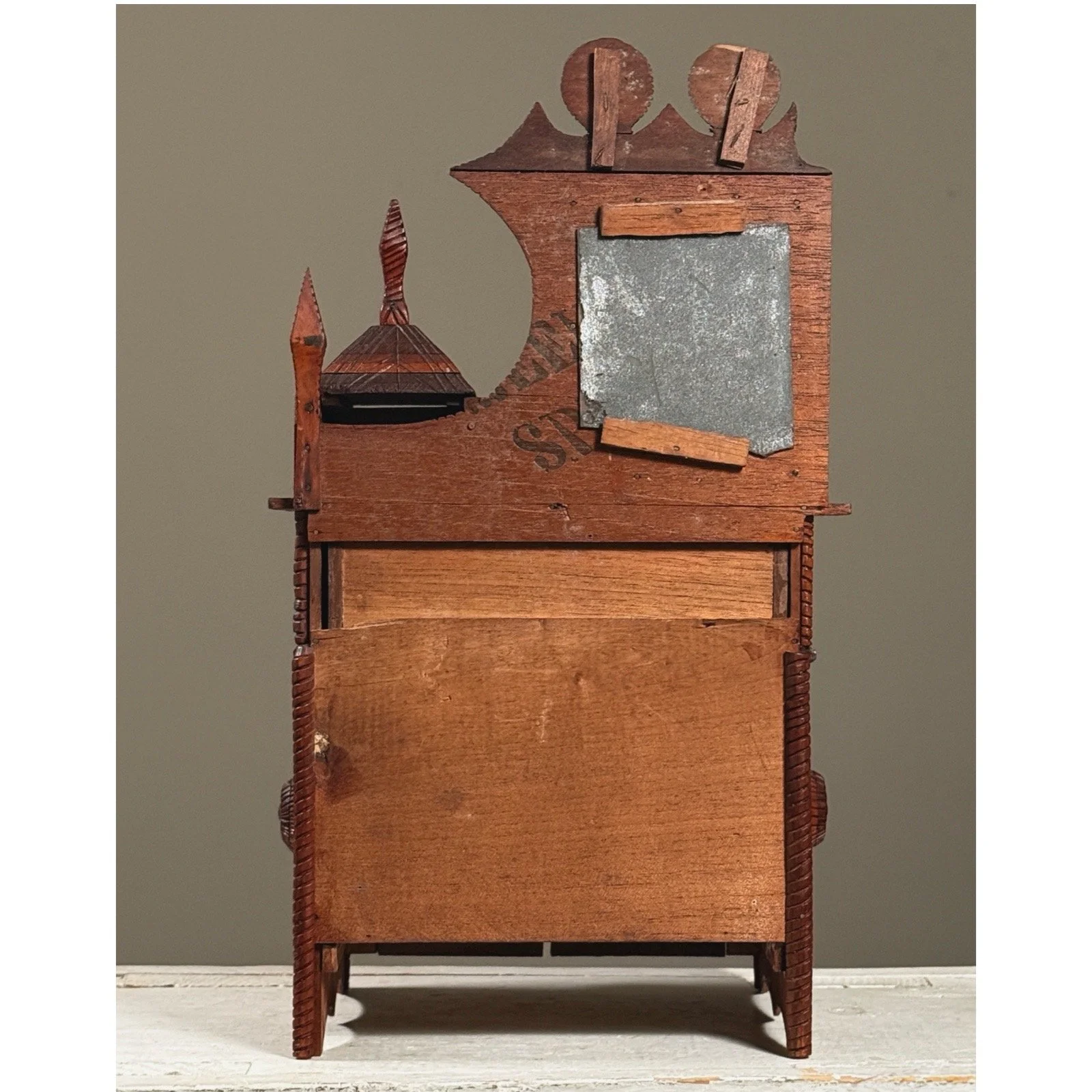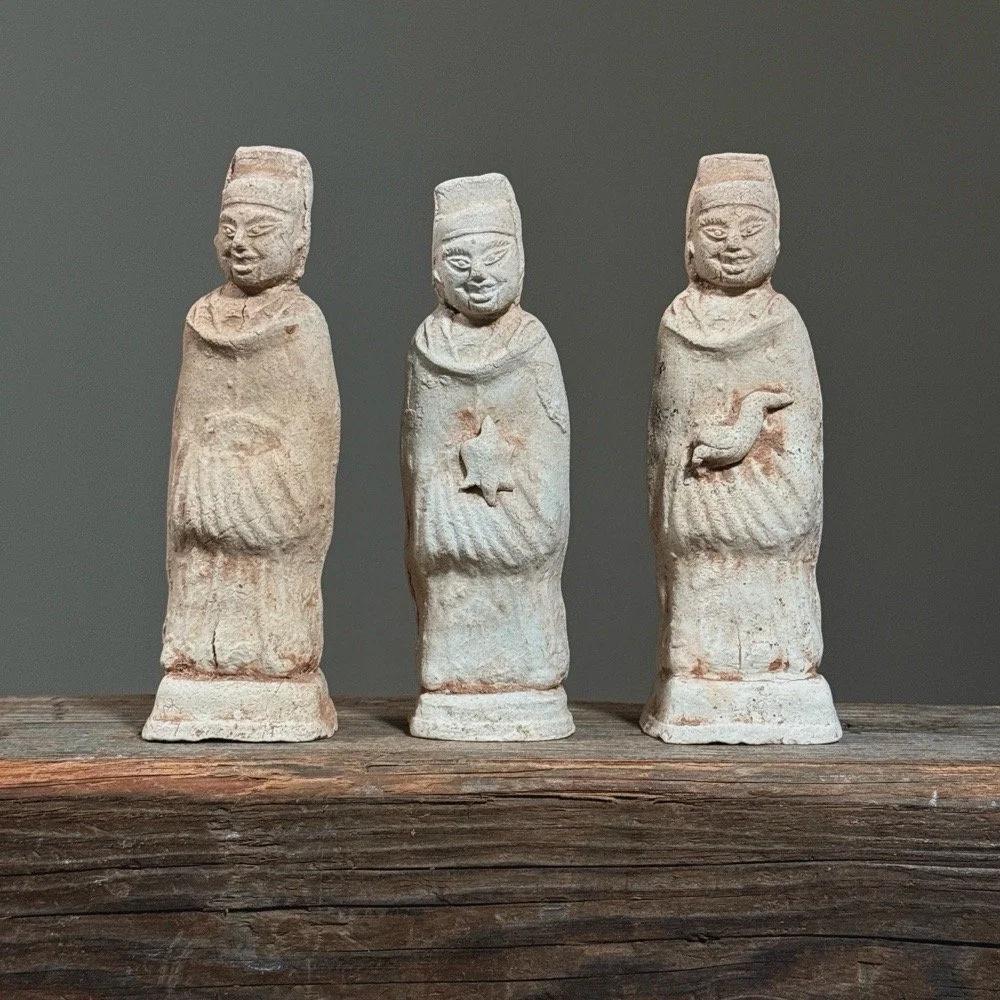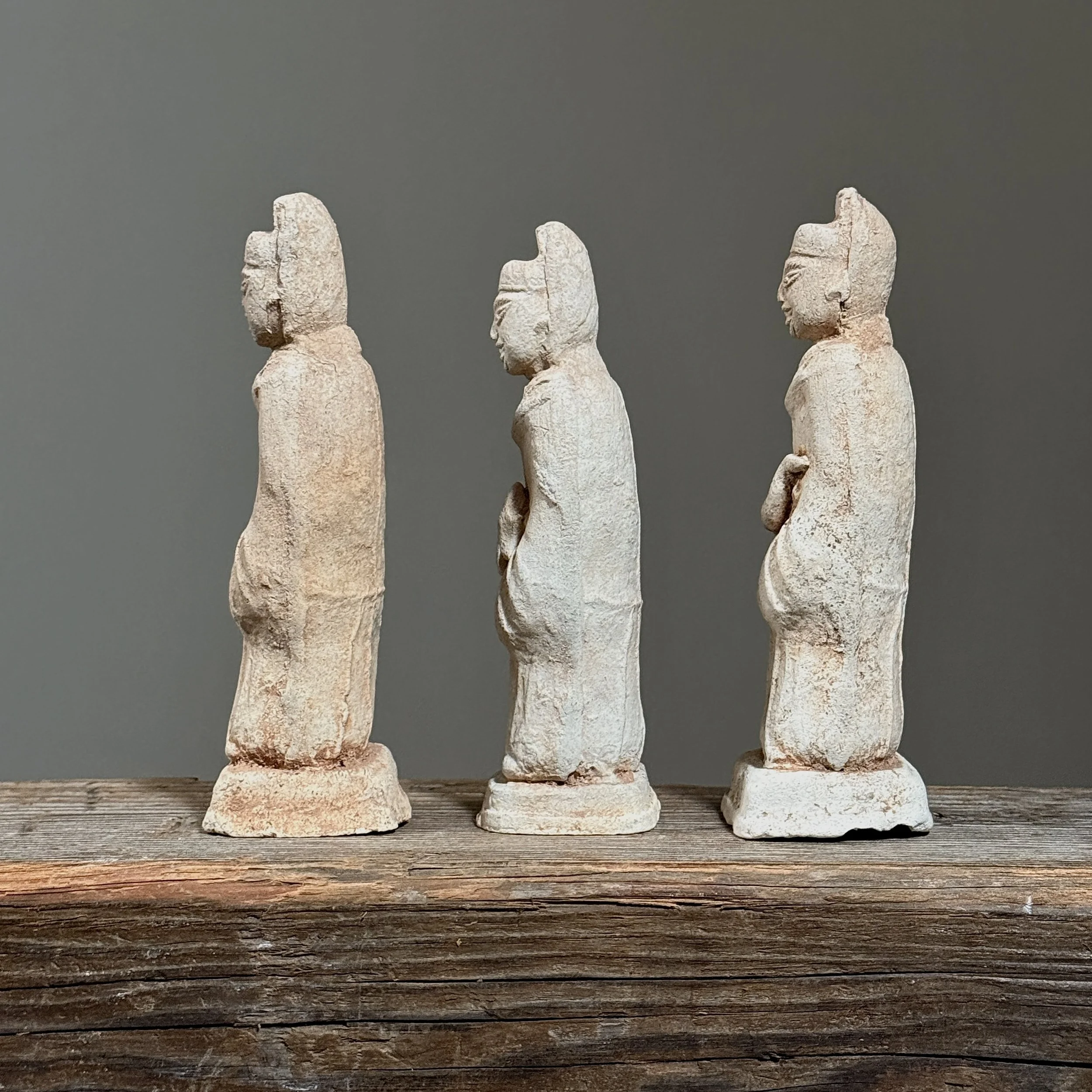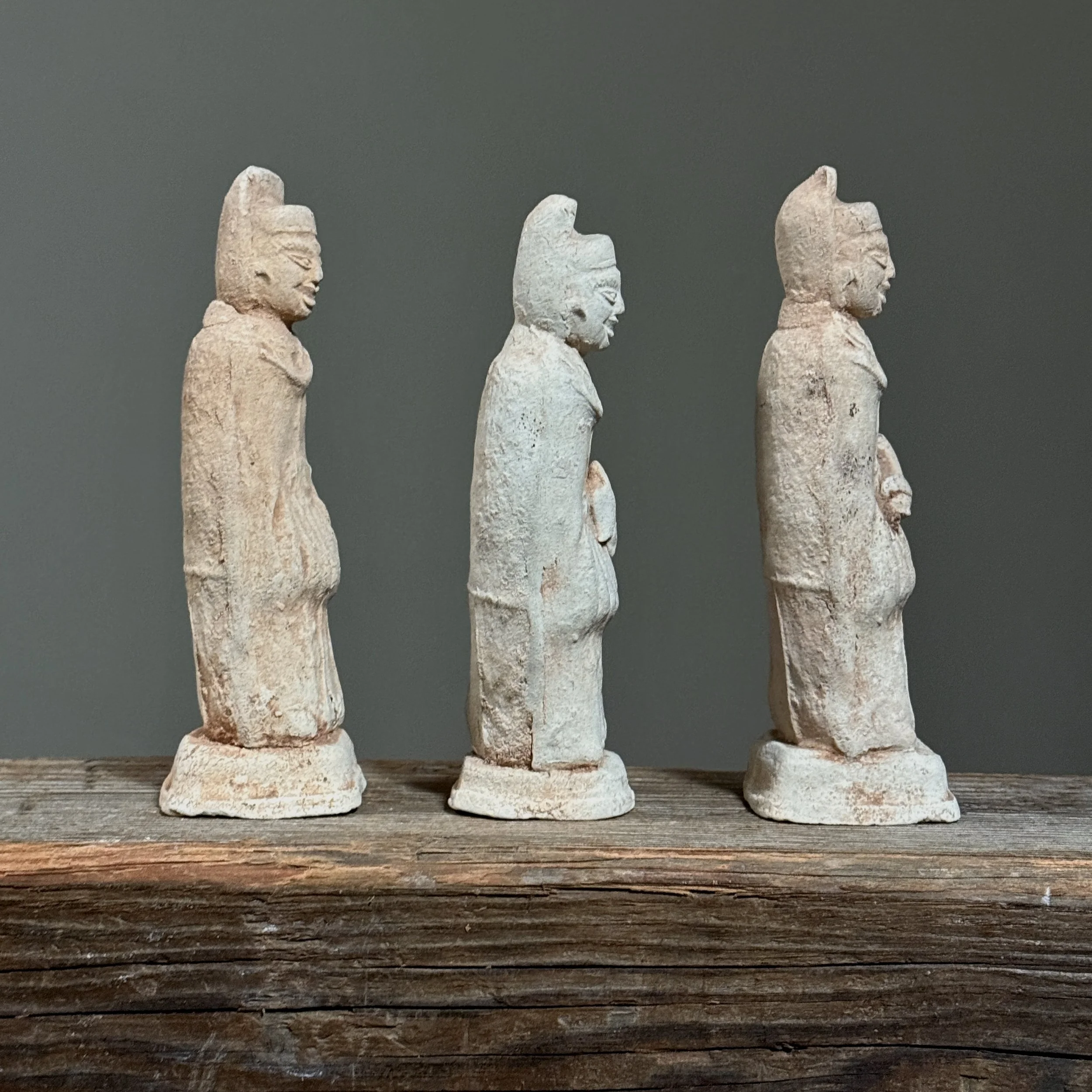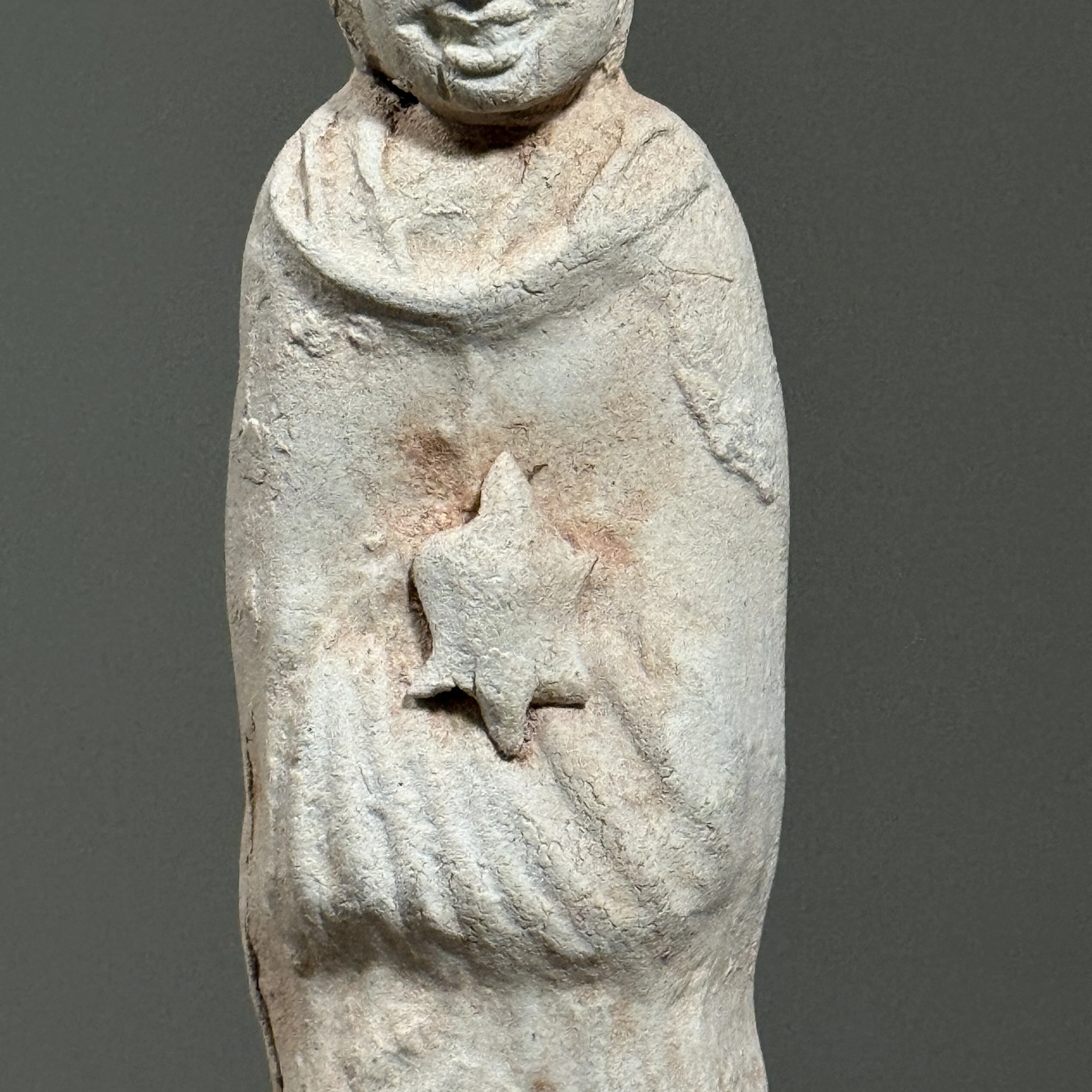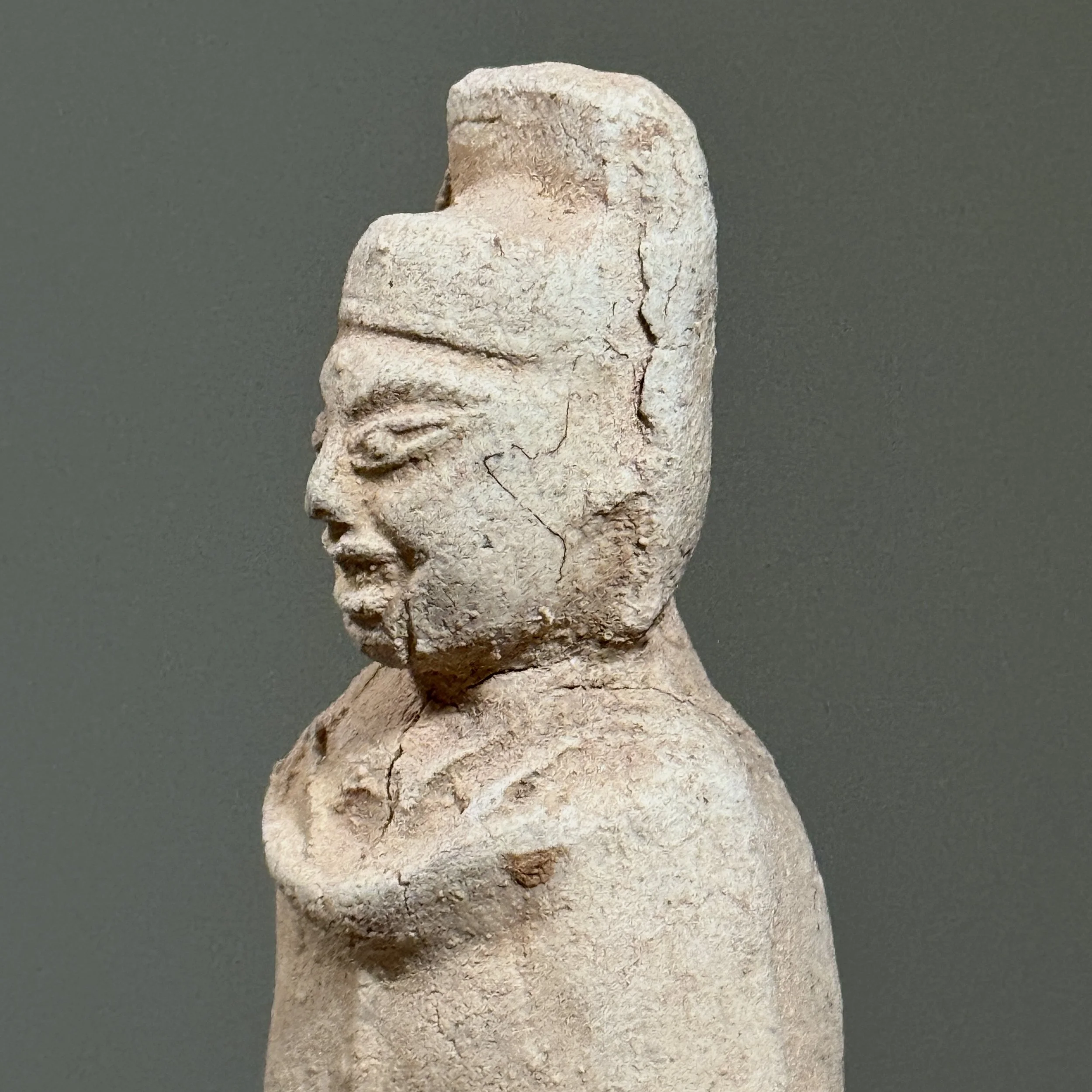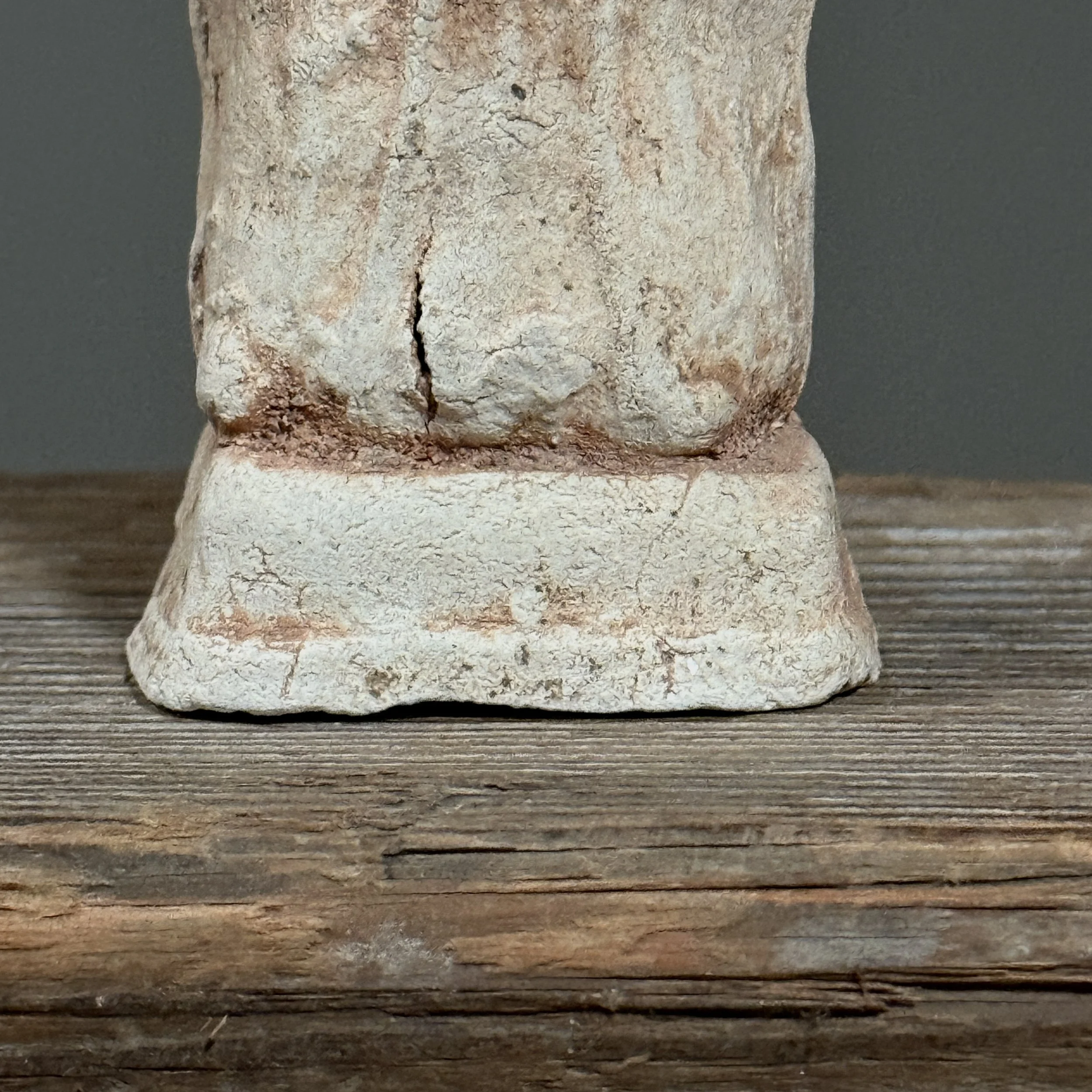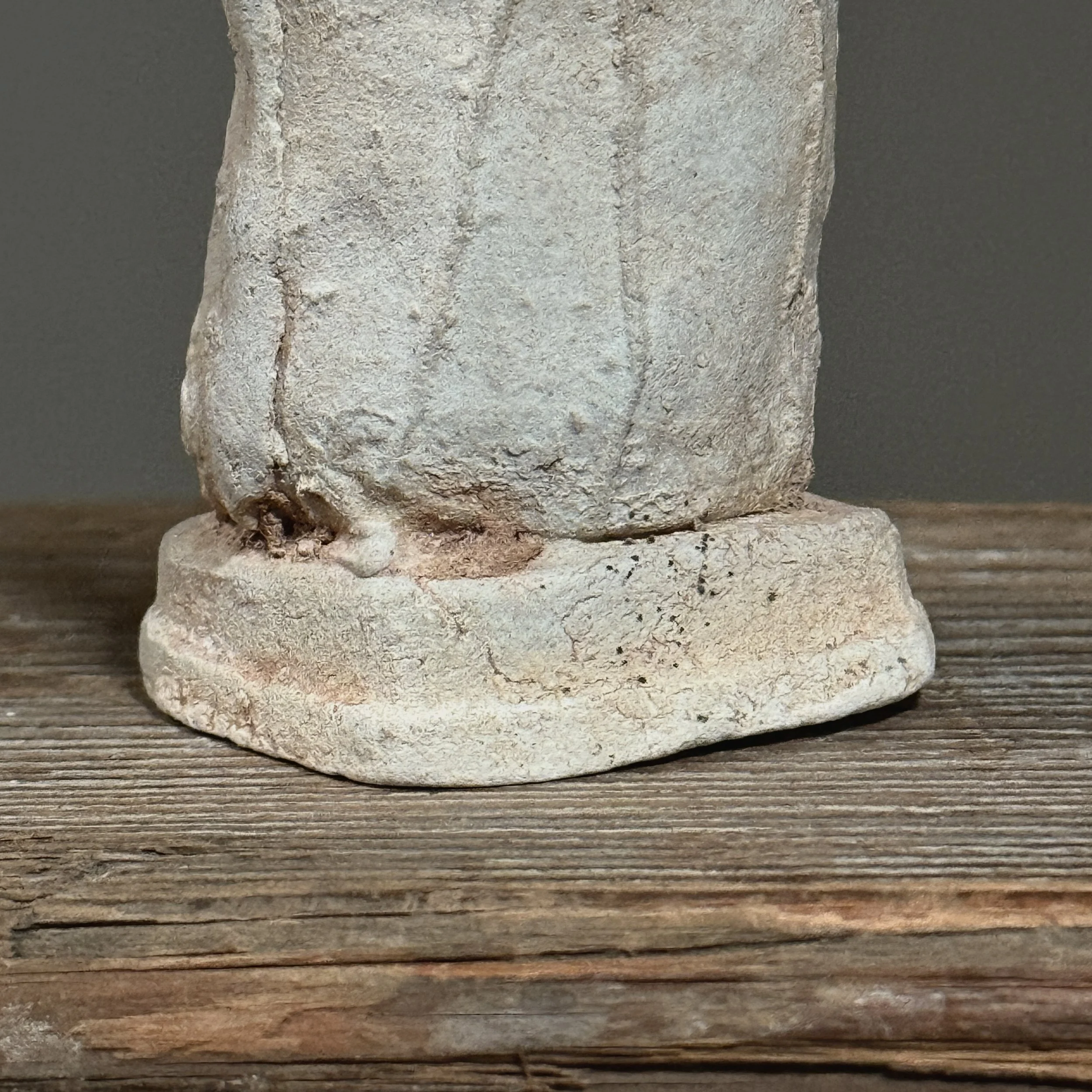 Image 1 of 9
Image 1 of 9

 Image 2 of 9
Image 2 of 9

 Image 3 of 9
Image 3 of 9

 Image 4 of 9
Image 4 of 9

 Image 5 of 9
Image 5 of 9

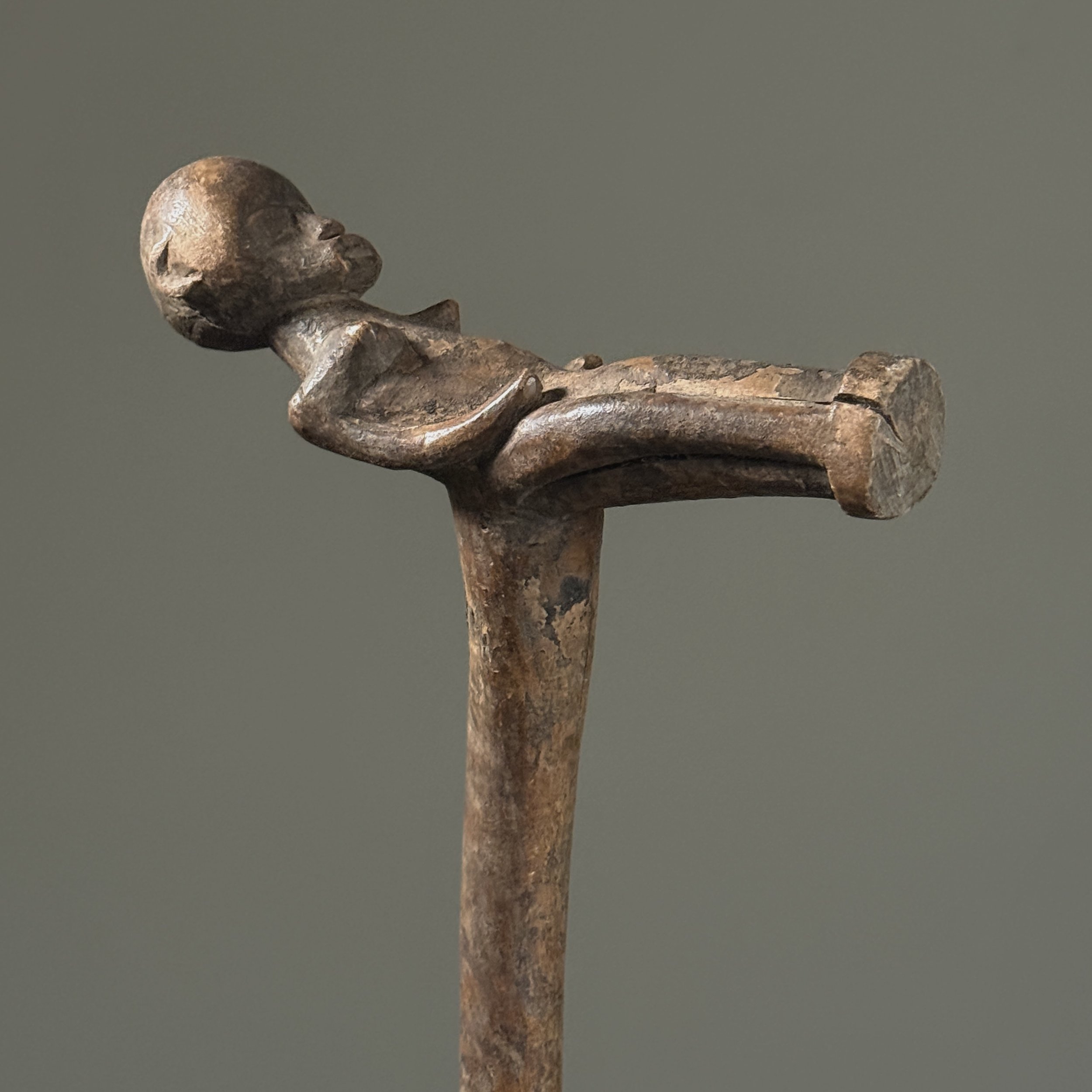 Image 6 of 9
Image 6 of 9

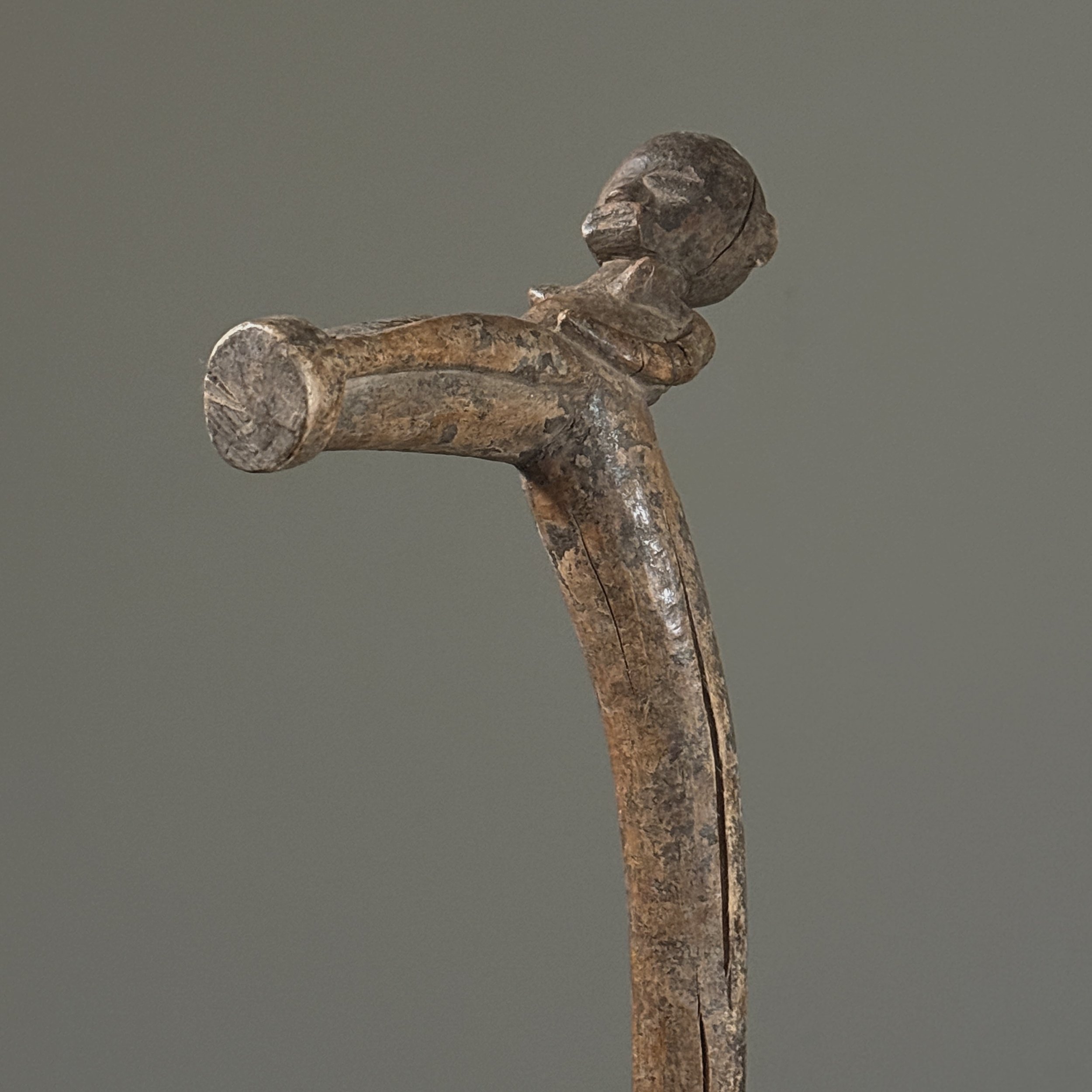 Image 7 of 9
Image 7 of 9

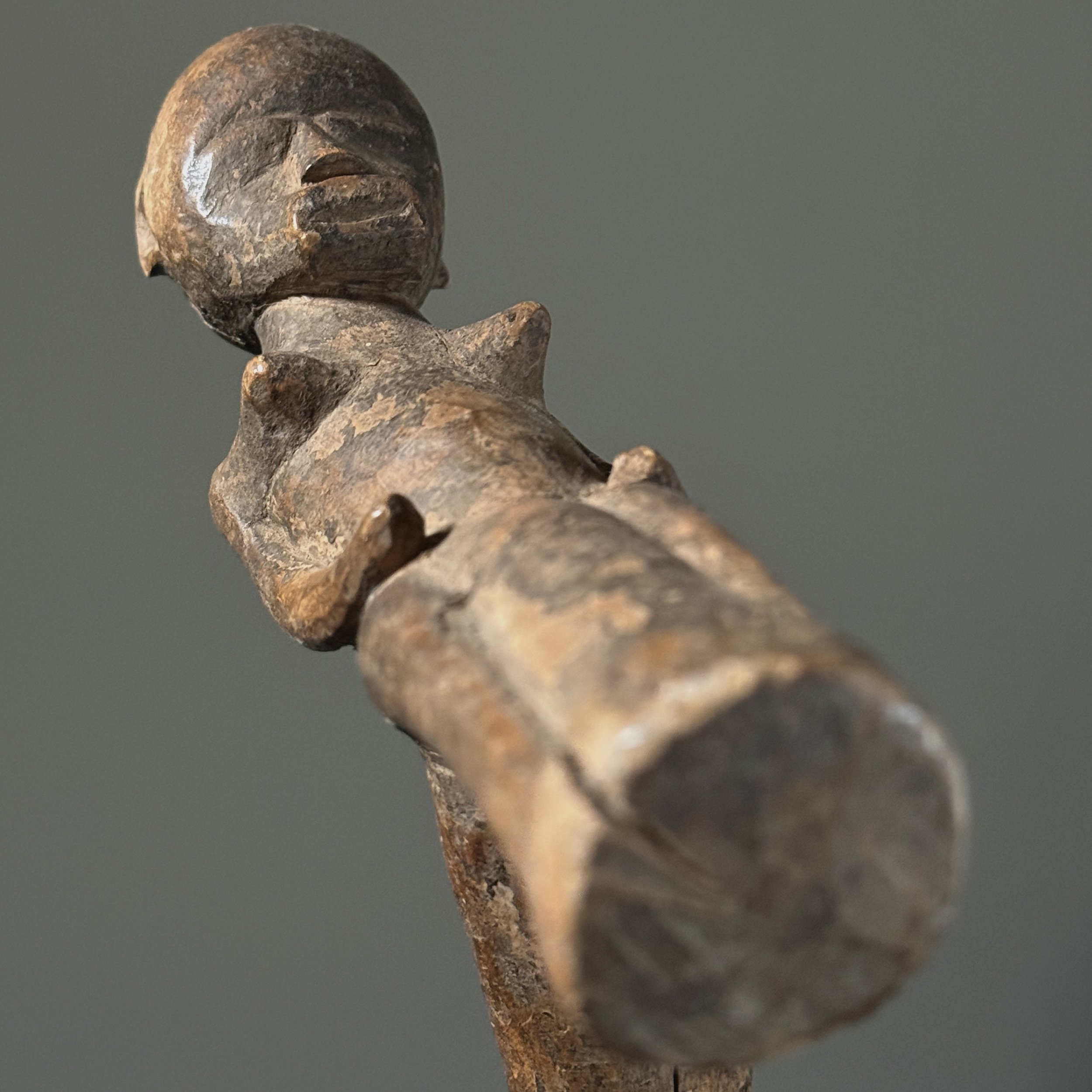 Image 8 of 9
Image 8 of 9

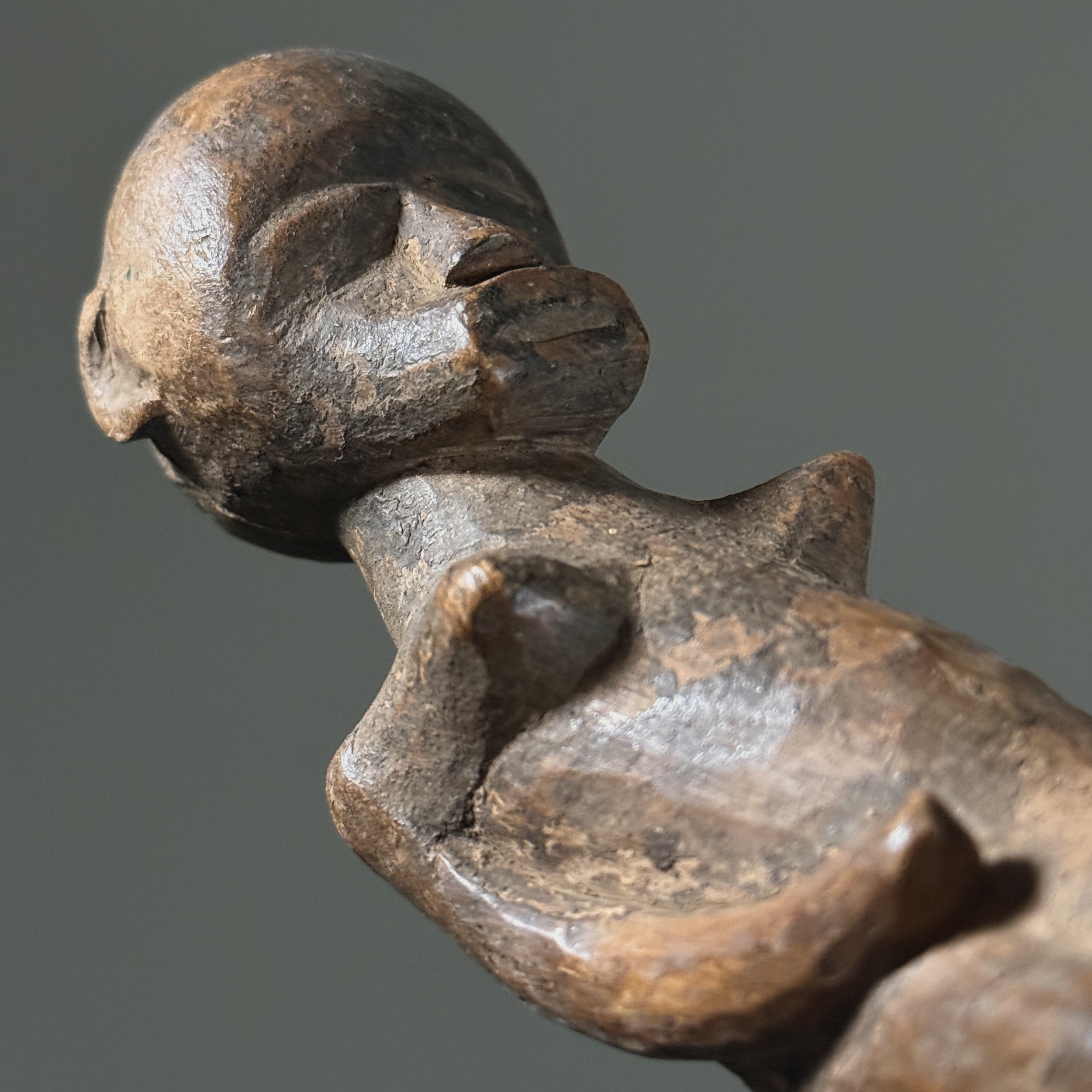 Image 9 of 9
Image 9 of 9










Lobi Figural Ceremonial Staff (Cane) – Burkina Faso, Early 20th Century
Lobi Figural Ceremonial Staff (Cane) – Burkina Faso, Early 20th Century
Exhibited on custom black wood display stand
Provenance: Thomas G.B. Wheelock Collection
Object Description:
This carved Lobi ceremonial staff features a reclined human figure serving as both handle and sculptural finial, exemplifying the Lobi people's tradition of merging utility with spiritual expression. The compact figure's abstracted form—with simplified facial features and gracefully curved posture—reflects the distinctive visual language of Lobi artisanship, where minimalism conveys profound symbolic meaning.
Historical and Cultural Significance:
Carved in the early 20th century by Lobi craftsmen of Burkina Faso, such staffs transcended their practical function as walking aids to become:
- Ritual objects used in ancestral ceremonies
- Status markers for elders and spiritual leaders
- Vessels for protective energies (*thil* spirits)
Condition & Presentation:
- Rich, variegated patina from decades of ritual handling
- Stable age-related wear including minor surface cracks (documented in provenance file)
- Expertly mounted on conservation-grade display stand to emphasize its sculptural qualities
Dimensions: 32" H x 5" W x 5.5" D (81 x 12.7 x 14 cm)
Notes:
This staff offers compelling dialogue about:
1. The Lobi worldview where everyday objects mediate spiritual realms
2. Colonial-era artistic resilience in Burkina Faso
3. Wheelock's pioneering efforts to preserve African cultural heritage
For comparative study, see related holdings at the Metropolitan Museum of Art (1982.456.3) and Fowler Museum (X86.355).
Thomas G.D. Wheelock was a dedicated collector of African art, with a particular focus on the artistic traditions of Burkina Faso. His mission extended beyond mere acquisition; he sought to both celebrate and preserve the rich cultural heritage of the region. Wheelock placed great value on the relationships he cultivated with local artists and communities, often traveling to Africa to engage directly with them. His efforts resulted in a profound connection to the cultural practices and artistic expressions of the region.
Wheelock’s collection, amassed over more than thirty years, grew to include over 1,700 pieces, making it one of the most extensive and significant collections of its kind. Four of these works are now part of the permanent collection at the Metropolitan Museum of Art in New York City, while other pieces have been loaned to prestigious institutions, including the High Museum in Atlanta.
The importance of Wheelock’s collection was further cemented with the publication of the rare and influential book, Land of the Flying Masks: Art and Culture in Burkina Faso; The Thomas G.B. Wheelock Collection. This publication highlights hundreds of exceptional works from the Nuna, Bwa, Bobo, and Mossi peoples, as well as notable pieces from the Lobi, Gurunsi, Winiama, and Lela communities. Through his collection and its documentation, Wheelock has left an enduring legacy that continues to honor and preserve the artistic traditions of Burkina Faso.
Lobi Figural Ceremonial Staff (Cane) – Burkina Faso, Early 20th Century
Exhibited on custom black wood display stand
Provenance: Thomas G.B. Wheelock Collection
Object Description:
This carved Lobi ceremonial staff features a reclined human figure serving as both handle and sculptural finial, exemplifying the Lobi people's tradition of merging utility with spiritual expression. The compact figure's abstracted form—with simplified facial features and gracefully curved posture—reflects the distinctive visual language of Lobi artisanship, where minimalism conveys profound symbolic meaning.
Historical and Cultural Significance:
Carved in the early 20th century by Lobi craftsmen of Burkina Faso, such staffs transcended their practical function as walking aids to become:
- Ritual objects used in ancestral ceremonies
- Status markers for elders and spiritual leaders
- Vessels for protective energies (*thil* spirits)
Condition & Presentation:
- Rich, variegated patina from decades of ritual handling
- Stable age-related wear including minor surface cracks (documented in provenance file)
- Expertly mounted on conservation-grade display stand to emphasize its sculptural qualities
Dimensions: 32" H x 5" W x 5.5" D (81 x 12.7 x 14 cm)
Notes:
This staff offers compelling dialogue about:
1. The Lobi worldview where everyday objects mediate spiritual realms
2. Colonial-era artistic resilience in Burkina Faso
3. Wheelock's pioneering efforts to preserve African cultural heritage
For comparative study, see related holdings at the Metropolitan Museum of Art (1982.456.3) and Fowler Museum (X86.355).
Thomas G.D. Wheelock was a dedicated collector of African art, with a particular focus on the artistic traditions of Burkina Faso. His mission extended beyond mere acquisition; he sought to both celebrate and preserve the rich cultural heritage of the region. Wheelock placed great value on the relationships he cultivated with local artists and communities, often traveling to Africa to engage directly with them. His efforts resulted in a profound connection to the cultural practices and artistic expressions of the region.
Wheelock’s collection, amassed over more than thirty years, grew to include over 1,700 pieces, making it one of the most extensive and significant collections of its kind. Four of these works are now part of the permanent collection at the Metropolitan Museum of Art in New York City, while other pieces have been loaned to prestigious institutions, including the High Museum in Atlanta.
The importance of Wheelock’s collection was further cemented with the publication of the rare and influential book, Land of the Flying Masks: Art and Culture in Burkina Faso; The Thomas G.B. Wheelock Collection. This publication highlights hundreds of exceptional works from the Nuna, Bwa, Bobo, and Mossi peoples, as well as notable pieces from the Lobi, Gurunsi, Winiama, and Lela communities. Through his collection and its documentation, Wheelock has left an enduring legacy that continues to honor and preserve the artistic traditions of Burkina Faso.

